Straatliederen
January 28, 2005
Vreemdelingen maken de taal simpel
February 1, 2005
Vreemdelingen maken de taal simpel; De complexe relatie tussen taal en samenleving
Marc van Oostendorp wint LOT-populariseringsprijs
October 26, 2005
Muziek uit Vondels “Gijsbrecht” teruggevonden
December 12, 2005
Workshop 26 april 2006: Typology and Minimalism
April 20, 2006
In memoriam Jo Daan
June 13, 2006

KNAW-rapport naamgeving Meertens Instituut
November 15, 2006

Fotoimpressie Wetenschapsdag 2006

Tentoonstelling: Van huis uit…
November 28, 2006
Subsidie toegekend aan digitaliseringsproject
January 10, 2007

Respons: mededelingenblad
February 7, 2007

Nieuwe website Meertens Instituut
February 26, 2007

Liederen in het Gruuthuuse-handschrift
March 5, 2007

Nederlandse Dialectendag
March 14, 2007

Sociolinguistics Symposium
March 20, 2007

De geschiedenis herhaalt zich
March 28, 2007

Anansi Symposium
May 10, 2007

Wilhelmus 75 jaar

Paardenbloem

Kwantitatief onderzoek
June 4, 2007

Louis Grijp: ‘Ik was er vroeg bij en ik ging fanatiek door’
June 11, 2007

Liederenbank online
June 21, 2007

Heldenverering
August 30, 2007

Lijsje Flepkous

Dutch Culture
September 10, 2007

Wonen toen en nu

Mirakelverhalen
October 30, 2007

Sinterklaas
November 29, 2007

Meertens Archieven
December 4, 2007

Regionale tijdschriften
January 7, 2008

Friese volksverhalen
January 15, 2008

Populairste voornamen
January 29, 2008
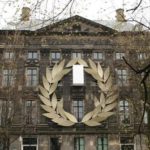
200 jaar KNAW
February 5, 2008

De canon met de kleine c
March 6, 2008

101 Bedevaartplaatsen in Nederland
April 7, 2008

Ellert en Brammert: een reuzenclaim van een ‘Drents’ roversverhaal
April 10, 2008

Er is er een jarig
April 21, 2008

Shrines and Pilgrimage in the Modern World
April 25, 2008

Overlijden Han Voskuil 1 mei 2008
May 6, 2008

Symposium Names in the Economy III
May 13, 2008

Brieven aan de toekomst
May 14, 2008

De canon met de kleine c
May 15, 2008

Congres Smaak en Distinctie: Elites in de Nederlanden in de 18e eeuw
May 26, 2008

Congres Smaak en Distinctie

Overlijden Jan Wiegmans
July 1, 2008

Workshop ‘In het spoor van de gebroeders Grimm’

Sneeuwwitje populairste van het land
July 7, 2008

Hoe? Zomerserie! 2008
July 15, 2008

De pelgrimage naar het graf van Jim
July 21, 2008

Gerrit Komrij neemt Fiere Nachtegaal in ontvangst
August 19, 2008
Brieven aan de Toekomst
September 18, 2008

Soundbites uit vervlogen tijden
September 22, 2008

Promotie over Turkse woninginterieurs
September 26, 2008

Oratie Marc van Oostendorp

Maria van Warfhuizen
October 2, 2008

ik@nrc.nl naar Verhalenbank

Onderzoek naar tweetaligheid
October 6, 2008

Canon met de kleine c
October 9, 2008

Volkscultuur belicht in Andere Tijden

Tulpen uit Turkije
October 30, 2008

Terugblik op de open dag
October 31, 2008

Sinterklaas blijft favoriet
November 3, 2008

cd-presentatie Onder de groene linde
November 13, 2008

Van Sinterklaas tot suikerfeest
November 17, 2008

Debat over Sinterklaas
November 20, 2008

Titel dekt lading niet!
November 24, 2008

Sprookjes tijdens de crisis

De Nacht van Sinterklaas
December 4, 2008

Twee publicaties rond Onder de groene linde
December 11, 2008

De Zingende Kaart

Melodieënzoekmachine valt in de prijzen

Alledaagse mythologie
January 6, 2009

Taal van alledag
January 23, 2009

Van kaasmeisje tot nationaal symbool
February 2, 2009

Twee nieuwe dialectatlassen

14 februari: Valentijnsdag
February 13, 2009

Subsidie voor 100.000 liedteksten
March 2, 2009

Op zoek naar oudste mop
March 10, 2009

Oudste Nederlandse mop gaat over een schele heilige
March 19, 2009

Oudst bekende Nederlandse liederen op muziek
March 30, 2009

Op pelgrimstocht in Nederland
April 6, 2009

Aanmoedigingsprijs voor taalwetenschapper
April 9, 2009

Innovatie in de geesteswetenschappen
April 15, 2009

Het hallehuis aan weerszijden van de grens
April 17, 2009
Genomineerd voor Academische Jaarprijs
May 11, 2009

Afrikaans. Een drieluik
May 28, 2009

Presentatie het Luitboek van Thysius
June 4, 2009

Presentatie voor Academische Jaarprijs op televisie
June 18, 2009

Nederlandse Bedevaartdatabank vernieuwd
July 6, 2009

Lezing over outsider art
August 17, 2009

Zeeuwse familienamen
August 25, 2009
Prijs voor Onder de groene linde cd-box
September 28, 2009
Unieke dialectopnamen online
Woorden met bovennatuurlijke kracht
September 29, 2009
Oorlog en vrede
October 14, 2009
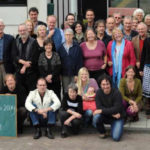
30 jaar Meertens Instituut
October 21, 2009
Sinterklaas verklaard
October 30, 2009
Meertens’ bureau in Zeeland
November 4, 2009
Edison voor Onder de Groene Linde
Collectie straatroepen
November 9, 2009
Onder de Groene Linde op tv
November 27, 2009
Complete Nederlandse Familienamenbank online
December 1, 2009
150 jaar Max Havelaar
December 9, 2009
Nu online: Quotidian
December 18, 2009
Debat over volkscultuur
January 22, 2010
Nieuw in onze collectie
February 4, 2010

Rode rozen en polonaise
February 12, 2010
Is HUN HEBBEN fout?
February 22, 2010
De volkscultuur voorbij
February 24, 2010
Kiliaanlezing: Wonen in woorden
April 14, 2010
Feestelijke presentatie Quotidian
April 19, 2010
Max Havelaar leesmarathon
May 3, 2010
Dag van het Nederlandse lied
Jaarverslag 2009 online
Vlaams en Nederlands
May 12, 2010
Vijf eeuwen migratie
Verteld verleden
May 18, 2010
Cultuur en identiteit
Meedeiners en moordliederen
May 25, 2010
Voornamenbank online
June 1, 2010
Wederopbouwboerderijen in Nederland
June 2, 2010
Meldpunt Taal 15 juni online
June 9, 2010
Vliegende start Meldpunt Taal
June 18, 2010
Congres over moderne sagen
June 21, 2010
Taalportaal Nederlands-Fries
Bedevaartplaatsen in Brabant
July 2, 2010
Balladen op Terschelling
July 8, 2010
Ate Doornbosch overleden
July 30, 2010
Terschelling: heilige grond voor de Nederlandse balladeonderzoeker
August 23, 2010
Nieuw Meertens Panel
September 6, 2010
Streektaal in de zorg
September 8, 2010
Verhalen van Stad en Streek
September 15, 2010
Promotie Peter van Kranenburg
September 20, 2010
Meertens Instituut lanceert digitale nieuwsbrief
September 28, 2010
Verhalen van Stad en Streek
September 29, 2010
Lezingenmiddag Land in het water – Eilandculturen in Nederland
October 15, 2010
Dialectrenaissance, 10 jaar later
November 2, 2010
De revival van de pelgrimage
11 november: Sint-Maarten
Nieuwsbrief november
November 8, 2010
Etymologiebank online
November 26, 2010
Aantal respondenten Meertens Panel verdubbeld
Lancering Databank Beschermheiligen
November 29, 2010
Kunstproject rondom Amelander dialect
December 1, 2010
Relatiegeschenk: Gelukkig Nieuwjaar!
December 3, 2010
Nieuwsbrief december
Nieuwjaarsuitgave: Gelukkig nieuwjaar
December 14, 2010
Quotidian: alledaagse cultuur anno 2011
January 5, 2011
Melodieënzoekmachine voorlopig nog toekomstmuziek?
January 6, 2011
Nieuwsbrief januari
January 10, 2011
Interactief verhalenplatform
January 12, 2011
Science Café Taalverloedering
January 17, 2011
Frau Antje 50 jaar
January 21, 2011
Jongeren spreken geen dialect maar regiolect
January 26, 2011
Koninklijke onderscheiding voor Nicoline van der Sijs
January 28, 2011
Gehonoreerde CLARIN-projecten
February 3, 2011
Nieuwsbrief februari 2011
February 4, 2011
Noam Chomsky in Nederland
February 8, 2011
“Valentijnsdag, dat is toch iets buitenlands, iets commercieels?”
February 11, 2011
Tentoonstelling Beschermheiligen op het Meertens Instituut
February 21, 2011
Familienamen en 200 jaar burgerlijke stand
March 3, 2011
Nieuwsbrief maart 2011
March 4, 2011
Taalportaal Nederlands en Fries
March 21, 2011
Elfde Nederlandse Dialectendag
March 22, 2011
Jaarverslag 2010
March 28, 2011
De oude Nederlandse maten en gewichten
De populariteit van traditionele Holland-symbolen
1 april!
Debatmiddag “Immaterieel erfgoed en volkscultuur†met boekpresentatie
April 1, 2011
Nieuwsbrief april 2011
Het mysterie van Arzbach, of: de omgekeerde stoottoon
May 5, 2011
Onderzoek in tekstbestanden Amerikaans Nederlands
May 23, 2011
Meimaand Mariamaand
Hester Dibbits van Meertens Instituut naar Reinwardt Akademie
May 27, 2011
Tentoonstelling Van bij de wieg tot bij het graf
May 31, 2011
Meldpunt Taal, een jaar later
June 2, 2011
Nieuwsbrief juni 2011
June 3, 2011
Twee projecten gehonoreerd in MeerWaarde-programma NWO
June 8, 2011
Meldpunt Taal, een jaar later
June 15, 2011
Subsidie voor ontsluiting gekaapte brieven
June 16, 2011
Promotie zeventiende eeuwse liedboeken
June 28, 2011
Subsidie voor automatisering volksverhalenbank
July 1, 2011
De ‘grammatica’ van melodieën en verhalen
Subsidie voor muzikaal computerproject
July 5, 2011
Van Santiago de Compostela naar Fisterra
July 15, 2011
Van huis uit
July 20, 2011
Iedereen een vaste achternaam
August 17, 2011
KB zet 500 oude boeken online
August 18, 2011
Meertens Instituut organiseert foto/filmwedstrijd
August 19, 2011
Leonie Cornips benoemd tot bijzonder hoogleraar Taalcultuur in Limburg
August 26, 2011
Hester Dibbits: terugblik op 20 jaar onderzoek
August 31, 2011
Nieuwsbrief september 2011
September 1, 2011
e-Laboratory Oral Culture opgericht
September 12, 2011
Straat- of bermmonumentjes
September 20, 2011
Een goedemorgen met Louis Grijp
September 28, 2011
In Limburg spreekt men overal dialect
October 5, 2011
nieuwsbrief oktober 2011
October 7, 2011
Stemmen voor publieksprijs fotowedstrijd Tot welke ‘wij’ behoor jij?
October 10, 2011
Open Access Week
October 26, 2011
De oudst bekende naam van Zwarte Piet: Pieter-mê-knecht (1850)
October 27, 2011
Ik behoor tot de mosh pitters, hard hitters en de pillentikkers
Talenquiz op Meertenssite
Hoorspel Het Bureau terug op Radio 1
November 2, 2011
De stem van de wetenschap – de Akademie in de 20ste eeuw
Subsidieaanvraag voor studie naar historische teksten
November 3, 2011
We doen parodiëren, wah! Carnavaleske identiteiten in taal en cultuur.
November 4, 2011
Nieuwsbrief november 2011
November 7, 2011
Meertens Instituut verwerft collectie Sinninghe
November 9, 2011
Taalpeil 2011 over meertaligheid
November 16, 2011
Louis Grijp en Jan Rot over het Wilhelmus
Symposium over de constructie van lokale identiteit in Limburg
November 21, 2011
Lezing Erfgoedregimes aan het werk: tussen beoordeling en ‘engineering’
November 25, 2011
Dialectatlas genomineerd voor populariseringsprijs
November 30, 2011
“Er wordt meer geschreven dan ooit tevoren”
December 2, 2011
Nieuwsbrief december 2011
Volksverhaalonderzoeker Theo Meder: “Bestaat er een universele verhaalgrammatica?”
January 6, 2012
Etymologieën toevoegen op etymologieWiki
Nieuwsbrief januari 2012
Nederlandse Familienamenbank van Meertens Instituut naar CBG
January 16, 2012
Studium Generale over taalverloedering
Nieuw centrum voor onderzoek naar emoties en zintuigen
January 20, 2012
Leonie Cornips over meertalig opvoeden: “We onderschatten wat kinderen aankunnen”
February 1, 2012
Heerlens Nederlands beleeft tweede druk
Nieuwsbrief februari 2012
February 3, 2012
Populariseringsprijs naar Dialectatlas van het Nederlands
February 6, 2012
Jubileum Talenquiz
February 8, 2012
Nederlanders: een nuchter volkje?
February 29, 2012
Quotidian volume 3 online
Afsluiting project Alfalab
Nieuwsbrief maart 2012
March 2, 2012
Louis Grijp wint Kruyskampprijs
March 7, 2012
Jaarverslag 2011 online
March 8, 2012
Dag van het Nederlandse lied op 15 mei
March 26, 2012
Nieuwe feesten en rituelen in Nederland
April 9, 2012
Nieuwsbrief april 2012
April 10, 2012
Pim Fortuyn als messias
May 1, 2012
Kidzcollege over taal
May 11, 2012
Publicatie: Nieuw in Nederland
Tijdschrift Volkskunde geheel vernieuwd
Vrijwilligers maken oude teksten toegankelijk
May 29, 2012
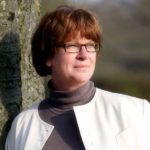
Oratie Leonie Cornips: Talen in beweging
May 30, 2012
Nieuwe publicatie: Shaping Virtual Lives
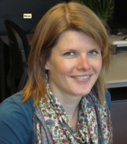
Boerendeuntjes op achttiende-eeuwse speelklokken
June 1, 2012
Nieuwsbrief juni 2012
Nederlandse Bedevaartbank verrijkt met uniek beeldmateriaal
June 11, 2012
NWO investeert 2 miljoen in project Nederlab
June 12, 2012
Vrijwilligers maken vragenlijsten toegankelijk
July 9, 2012
Nieuwsbrief juli 2012
July 11, 2012
NWO-subsidie voor vernieuwend project binnen de geesteswetenschappen
Lezing Visueel katholicisme in hedendaags Amerika
August 28, 2012
Meertens Instituut lanceert Taaldetector
September 3, 2012
Tv-serie en boek over dialecten en streektalen in Nederland
September 5, 2012
Nieuwsbrief september 2012
September 7, 2012
Nederlab – voor al uw diachrone onderzoeksvragen
September 10, 2012
29 oktober: Meertens Ethnology Lecture over erfgoedpolitiek in Zuid-Afrika
September 26, 2012
CLARIN-NL filmpjes
September 27, 2012
Duizenden gekaapte brieven toegankelijk voor iedereen
October 5, 2012
Nieuwsbrief oktober 2012
Duizenden gekaapte brieven ontsloten dankzij vrijwilligers
October 8, 2012
Conferentie: Identities, Intertextuality, and Performance of Song Culture, 1500-1800
October 22, 2012
Zwarte Piet: geen Afrikaanse slaaf maar een Saraceen?
October 31, 2012
Nieuwsbrief november 2012
November 2, 2012
Data over daten: vrijgebruiken in Nederland
November 21, 2012
Collectie veldwerkopnames Pol Heyns online
November 22, 2012
Digitale collecties erfgoedinstellingen beter te ontsluiten
November 26, 2012
Hoorcollege op cd over taalverloedering
December 3, 2012
Vrijwilligers brengen historische NSB-karikaturen in kaart
December 6, 2012
‘Het Nederlands is één van de best beschreven talen van de wereld’
December 7, 2012
Nieuwsbrief december 2012
Gekaaptebrieven.nl genomineerd voor Geschiedenis Online Prijs
December 17, 2012
Onderzoeksplan 2013-2018 verschenen
December 21, 2012
NWO-subsidie voor Grammatica op de kaart
January 2, 2013
NWO-subsidie voor Grammatica op de kaart
Oude theorieën verifiëren met nieuwe technieken – Over de grammatica van volksverhalen
January 3, 2013
101 Bedevaartplaatsen in vier jaar
January 4, 2013
Nieuwsbrief januari 2013
KNAW-subsidie voor Kaartenbank
January 7, 2013
Project NL
January 16, 2013
Migratie in Nederland in de 20e eeuw interactief in kaart
January 23, 2013
Prof dr. Nicoline van der Sijs benoemd tot hoogleraar
January 25, 2013
Call for papers Congres Werkgroep Zeventiende Eeuw
January 28, 2013
Nederlands Dagboekarchief vindt onderdak bij Meertens Instituut
January 30, 2013
Nieuwsbrief februari 2013
February 1, 2013
Zeeuws-Vlaams in Brazilië: een bijzondere mix
27 maart: Meertens Ethnology Lecture over herinneringsbomen
February 28, 2013
Nederlanders zijn verknocht aan hun eigen regio
March 1, 2013
Nieuwsbrief maart 2013
March 4, 2013
15 april: Lezing over de media en de ziekten van de multiculturaliteit
April 2, 2013
De Vrede van Utrecht op cd van Camerata Trajectina
April 3, 2013
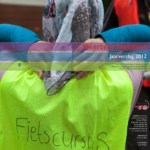
Jaarverslag 2012 online
Nieuwsbrief april 2013
April 5, 2013
1-aprilgrappen
‘Mobocratie’ gedoogt Oranje
April 29, 2013
Nieuwsbrief mei 2013
May 3, 2013
Het Nederlandse koningshuis gaat met zijn tijd mee
Hemelvaartsdag, eropuit!
Het levensverhaal blijft behouden
May 8, 2013
Computer raadt leeftijd en geslacht twitteraar
May 13, 2013
Jo Daan en het Amerikaans-Nederlands
May 21, 2013
Standpunt Huygens ING, IISG en Meertens Instituut inzake KNAW Humanities Center
May 24, 2013
Publiekssymposium: Wie is de baas over de taal?
May 27, 2013
Theo Meder verkozen tot Europees lid ISCLR
June 5, 2013

Theo Meder verkozen tot Europees lid ISCLR
Nieuwsbrief juni 2013
June 7, 2013
Aanbieding eerste Levensboek aan Meertens Instituut
Prof. Gregory Guy te gast aan het Meertens Instituut
Luistertaal in Limburg
Veldwerkfoto van Peter Jan Margry valt in de prijzen
June 17, 2013
Van Lidwina tot Jomanda: Zieners, Profeten en Genezers
June 26, 2013
Gastcollege van sociolinguïst Gregory Guy
July 2, 2013
Taalportaal lanceert demoversie
July 10, 2013
Woordenboek van het Nederlands in Suriname van 1667 tot 1876
July 22, 2013
Een goedemorgen met… Louis Grijp
August 15, 2013
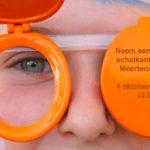
Neem een kijkje in de schatkamers van het Meertens Instituut!
August 21, 2013
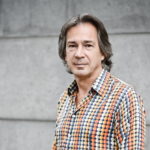
Peter Jan Margry benoemd tot hoogleraar Europese etnologie (UvA)
August 29, 2013
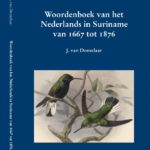
Over doekoe en roti. Het Nederlands in Suriname
September 6, 2013
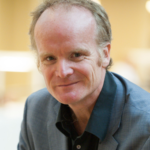
Marc van Oostendorp start fellowship KB en NIAS
September 9, 2013
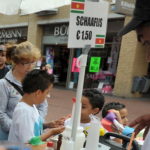
Nieuwsbrief september 2013

Streektalendag 2013: digi-streek-taal
September 30, 2013
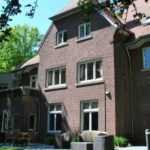
Fellowship Leonie Cornips en Irene Stengs bij NIAS
October 2, 2013
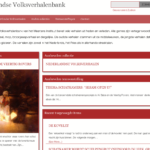
Schatten en sociale media : de nieuwe Volksverhalenbank komt online
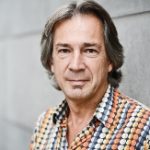
Eerste leerstoel Europese etnologie in Nederland
October 3, 2013
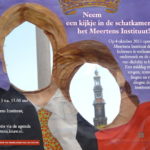
Open dag 4 oktober 2013
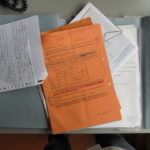
Nieuwsbrief oktober 2013
October 4, 2013

Nederlandse Verhalenbank online
October 9, 2013
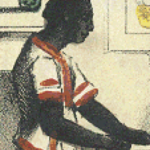
Piet en Sint – veelgestelde vragen
October 23, 2013
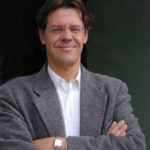
Oude en nieuwe dialecten van het Nederlands samengebracht in één boek
October 31, 2013
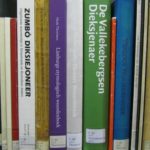
Nieuw Meertens-project rond dialectwoordenboeken
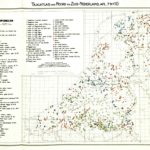
Spijbelen
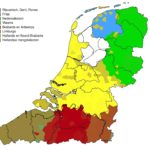
Nieuwsbrief november 2013
November 4, 2013
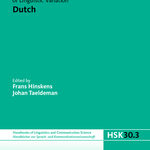
Nieuw handboek over Nederlandse taalvariatie
November 8, 2013
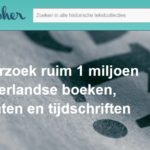
Nieuwe zoekmachine voor digitale teksten
November 26, 2013
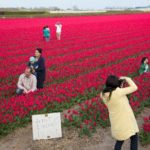
NL
December 3, 2013

“Wij zijn onze taal”. Over de meervoudige betekenis van zinnen
December 6, 2013

Nieuwsbrief december 2013
December 10, 2013

Statenvertaling van 1657 door vrijwilligers gedigitaliseerd
January 7, 2014

Projectvoorstel COMPARE gehonoreerd

Talige en culturele variatie in kaart gebracht
January 9, 2014

Nieuwsbrief januari 2014
January 10, 2014

De scandeermachine
January 16, 2014
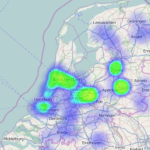
Ook op Blue Monday zijn we een vrolijk twittervolk
January 20, 2014

Vrijwilligers gezocht voor Sonttolproject
January 29, 2014
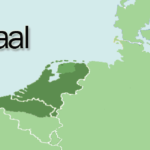
Nederlandse en Friese grammatica digitaal beschikbaar voor internationaal publiek via taalportaal.org
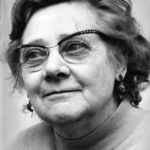
Opnames Nederlands in Amerika gedigitaliseerd
February 6, 2014
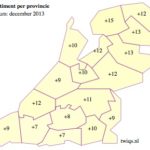
Twitter als basis voor taalkundig onderzoek
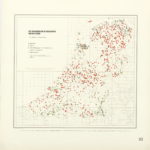
Tienduizenden taalkundige en etnologische kaarten beschikbaar via de Kaartenbank
February 7, 2014
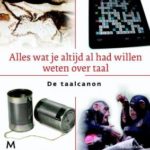
De taalcanon wint de LOT Populariseringsprijs 2013
February 10, 2014
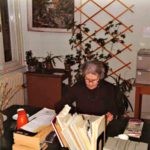
Nieuwsbrief februari 2014
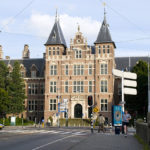
Samenwerking instituten KNAW
February 14, 2014
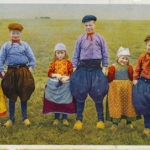
Informanten Waterland gezocht
February 27, 2014
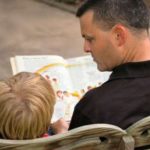
Nieuw onderzoek van start naar voordelen van meertaligheid
March 5, 2014
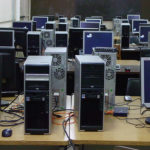
Nieuwe mogelijkheden voor historisch taalkundig onderzoek
March 7, 2014

Nieuwsbrief maart 2014
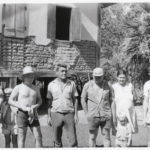
Samenwerking met documentairemakers Braziliaanse Koorts
March 20, 2014
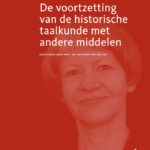
Oratietekst Nicoline van der Sijs
April 1, 2014
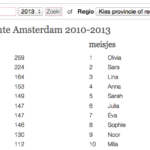
Populariteitslijsten in de Voornamenbank
April 2, 2014

“Veel mensen zijn religieus zonder dat ze dat beseffen”

Nieuwsbrief april 2014
April 4, 2014
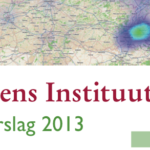
Jaarverslag 2013 online
April 17, 2014
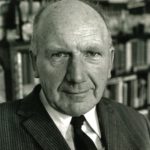
Dam Jaarsma: Nederlands grootste verhalenverzamelaar
May 1, 2014
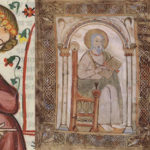
Bronnenlijst Limburgse letteren tot het jaar 1900 beschikbaar op DBNL
May 2, 2014
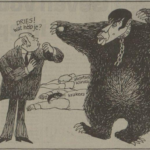
Nieuwsbrief mei 2014

Opnamen Middelnederlandse liederen digitaal ontsloten
May 14, 2014
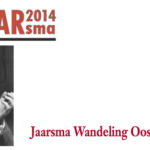
Dam Jaarsma wandelroute
May 23, 2014
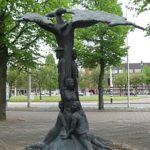
Koloniaal verleden diep verankerd in het alledaagse leven
June 6, 2014
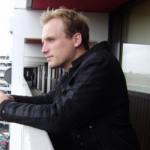
Nieuwsbrief juni 2014
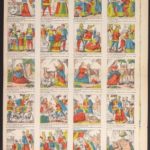
Tentoonstelling Sterke verhalen – vijf eeuwen vertelcultuur
June 11, 2014
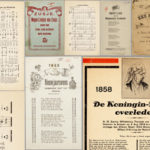
50.000 Nederlandse liedteksten online
June 18, 2014

12 miljoen voor digitale infrastructuur
July 2, 2014
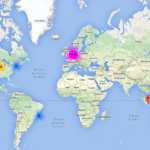
De ‘sprekende kaart’ over de grens
August 20, 2014
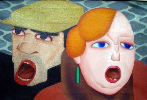
Liederenbank genomineerd voor Nederlandse Dataprijs
September 2, 2014

Oratietekst Peter Jan Margry online
September 3, 2014
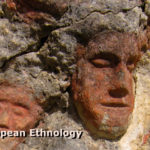
Amsterdam Center for European Ethnology
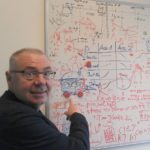
“Fonologische structuur is niet altijd gelijk aan wat je hoort”
September 5, 2014

Nieuwsbrief september 2014
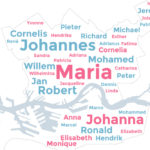
“Hoe Johannes Mohamed werd”: Rotterdamse voornamen in een interactieve app
September 15, 2014
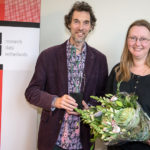
Liederenbank wint Nederlandse Dataprijs
September 24, 2014

Vieze liedjes geven beeld van hun tijd
October 3, 2014

Nieuwsbrief oktober 2014
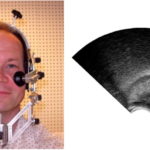
Oproep: proefpersonen gezocht uit Amsterdam en Waterland
October 9, 2014
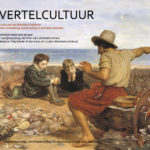
Meertens Instituut geeft nieuw e-tijdschrift Vertelcultuur uit
October 22, 2014

Unieke collectie egodocumenten naar Meertens Instituut
October 29, 2014
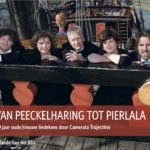
40 jaar Camerata Trajectina
November 5, 2014
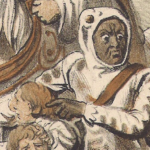
Zwarte Piet als kikker? Een heel andere Piet uit 1886
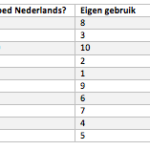
Hun hebben is ‘fout’, u hebt is ‘goed’
November 6, 2014

Hun hebben is ‘fout’, u hebt is ‘goed’
November 7, 2014
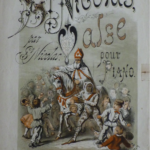
Zwarte Piet als kikker? Een heel andere Piet uit 1886
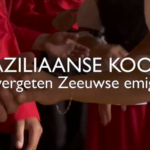
Trailer Braziliaanse Koorts
November 10, 2014
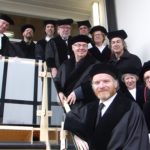
Raad van 11
November 11, 2014
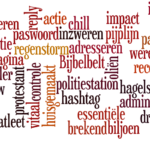
Anglicisme van het Jaar
November 14, 2014
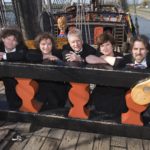
Visser-Neerlandiaprijs voor Camerata Trajectina
November 21, 2014

Online cursus Taalkunde
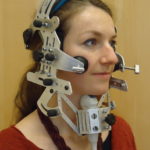
Ultrasound-apparaat legt articulatie dialectsprekers bloot
December 3, 2014
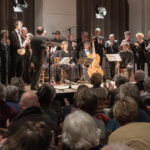
Oeuvre van Camerata Trajectina toegankelijk via de Liederenbank
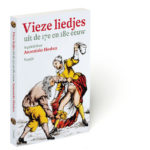
Gerrit Komrij-prijs voor Vieze Liedjes
December 8, 2014

Nieuwsbrief december 2014
December 10, 2014
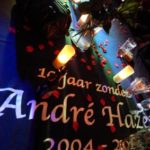
André is cultureel erfgoed – over ‘Het fenomeen Hazes’
January 9, 2015
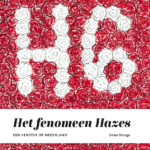
Nieuwsbrief januari 2015
January 12, 2015
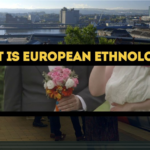
Wat is Europese Etnologie?
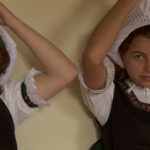
Braziliaanse Koorts in première
January 22, 2015
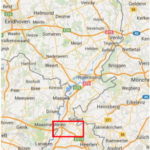
Tweetalige kinderen in Limburg niet belast door dialect
February 4, 2015
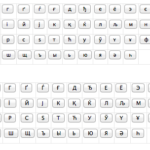
Gehonoreerd: TRANSCRIPTIE-APP voor cyrillisch schrift
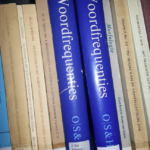
Digitale data: SOA en ASO
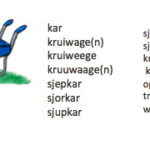
Nieuwsbrief februari 2015
February 6, 2015
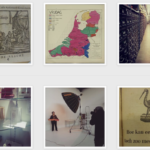
Meertens Instituut op Instagram
February 18, 2015
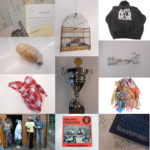
Bijlmer Meer, Vitrine van Zuidoost
February 19, 2015
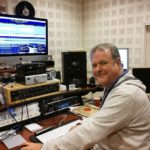
Audiodigitalisering op het Meertens Instituut
March 4, 2015
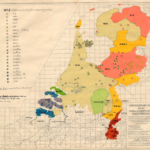
Stem op de Kaartenbank
March 6, 2015

Nieuwsbrief maart 2015
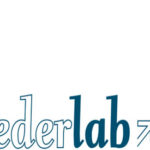
Lancering Nederlab
March 12, 2015
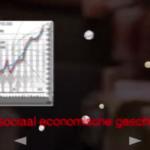
CLARIAH kick-off
March 18, 2015
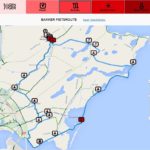
De SagenJager, routeplanner vol met volksverhalen
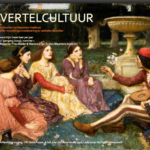
Tweede nummer Vertelcultuur verschenen
March 19, 2015

Met de waterschrik door de polder
April 1, 2015

Nieuwsbrief april 2015
April 3, 2015
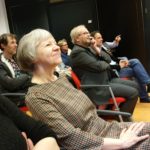
Terugblik verjaardagssymposium Nicoline van der Sijs
April 9, 2015
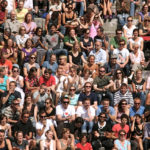
Stel samen met een onderzoeker een vraag voor de wetenschap
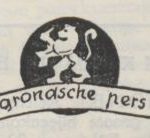
Vrijwilligers gevraagd voor crowdsourcingproject verzetskranten
April 28, 2015
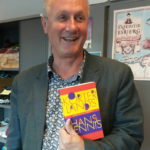
Het Korterlands is van alle tijden
April 30, 2015
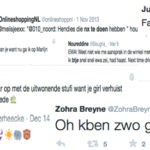
Nieuwsbrief mei 2015
May 6, 2015
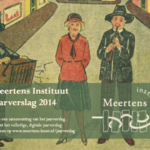
Jaarverslag 2014
May 18, 2015
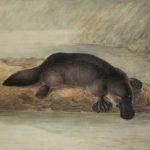
Een woord uit elk jaar

Oprichting Europese koepel van Dagboekarchieven
June 2, 2015
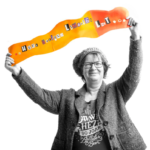
Maak deel uit van de fototentoonstelling ‘Dat heel Holland Limburgs lult’
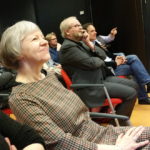
Dialectwoorden in een nieuw digitaal jasje
June 3, 2015
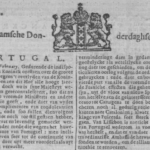
Help je mee met het overtikken van historische kranten uit de 17de eeuw?
June 5, 2015
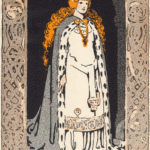
Nieuwsbrief juni 2015
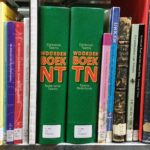
Lancering elektronische Woordenbank van de Nederlandse Dialecten (eWND)
June 16, 2015

Maak deel uit van de fototentoonstelling ‘Dat heel Holland Limburgs lult’
June 30, 2015
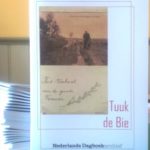
Vakantiedagboekje uit 1920
July 8, 2015

Stages voor taalkundestudenten en taalbeheersers
August 13, 2015
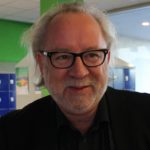
Prof. dr. Theo Meder benoemd tot hoogleraar
September 2, 2015

Collectie Fonetiek van UvA naar Meertens Instituut
September 3, 2015

Op zoek naar het eigene in een voormalige Coca-Colafabriek

Nieuwsbrief september 2015
September 4, 2015
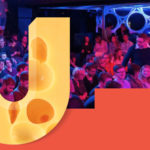
Universiteit van Nederland
September 7, 2015

Sagen jagen door de Friese Wouden
September 16, 2015
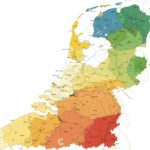
Deelnemers gezocht voor grammatica-experiment
September 21, 2015
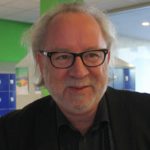
Nieuwe leerstoel volksverhaal biedt verdieping op letterkundig onderzoek
October 1, 2015

Nieuwsbrief oktober 2015
October 5, 2015
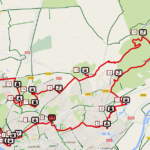
SagenJager voor Arnhem en omgeving
October 23, 2015
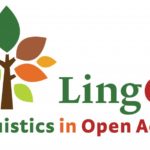
Nieuw open access-initiatief van start: Linguistics in Open Access
October 28, 2015
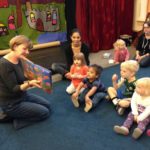
Stageplaats: dialectgebruik op peuterspeelzalen en kinderdagverblijven
October 30, 2015
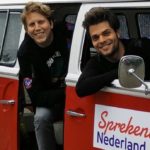
Nieuwe app brengt Nederlandse accenten in kaart
November 5, 2015
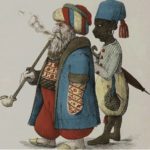
Een voorloper van Jan Schenkman: een Kerstman met een zwarte knecht (1803)
November 10, 2015
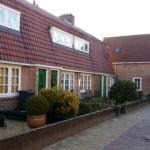
Digitale data: wonen in een Dudokhuis

Nieuwsbrief november 2015
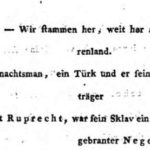
Een Kerstman met een zwarte knecht
November 17, 2015
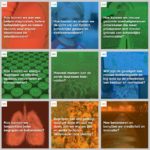
Presentatie Nationale Wetenschapsagenda
November 30, 2015

College over spraak, taal en accenten

Omroep NTR maakt blauwdruk van het gesproken Nederlands
December 2, 2015
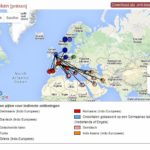
Nederlandse woorden in buurlanden en verre oorden
December 3, 2015
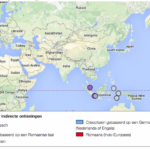
Uitleenwoordenbank geeft inzicht in ons verleden
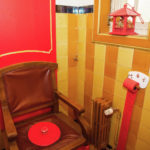
Nieuwsbrief december 2015
December 4, 2015
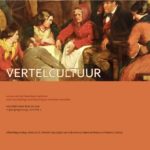
Nieuw nummer e-zine Vertelcultuur verschenen
December 16, 2015
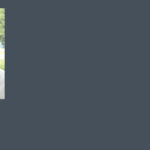
In memoriam prof. dr. Ruth-E. Mohrmann
January 5, 2016

Etnolecten in heden en verleden
January 8, 2016
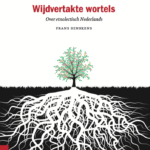
Nieuwsbrief januari 2016
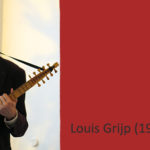
In memoriam prof. dr. Louis Grijp
January 12, 2016
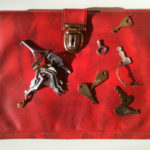
Data van Dagboeken
February 4, 2016
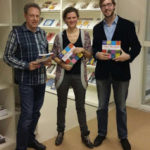
2015: een bijzonder taaljaar
February 5, 2016
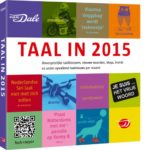
Nieuwsbrief februari 2016
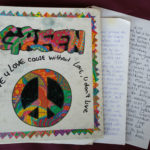
Op zoek naar puberdagboeken
March 2, 2016
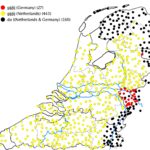
Grensoverschrijdende wetenschap

Nieuwsbrief maart 2016
March 4, 2016
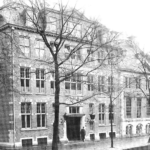
KNAW Humanities-cluster krijgt vaste vorm
March 8, 2016
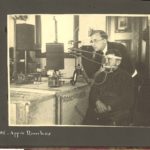
Tentoonstelling ‘Out of the box’
March 16, 2016
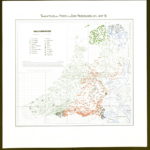
Uitgebreide Kaartenbank in een nieuw jasje
April 4, 2016
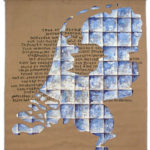
Jaarverslag 2015
April 5, 2016
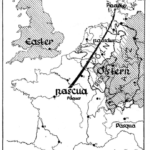
Nieuwsbrief april 2016
April 6, 2016
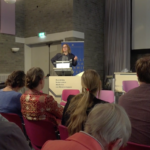
Louis Peter Grijp-lezing 2016
April 12, 2016
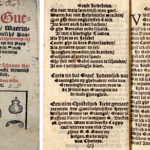
De zoektocht naar de auteur van het Wilhelmus
April 20, 2016
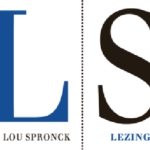
Instelling Dr. Lou Spronck-lezing in Maastricht
April 21, 2016
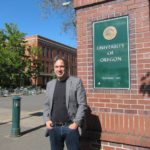
Peter Jan Margry ontvangt beurs als Global Oregan Collaboration Scholar
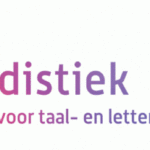
Lancering Neerlandistiek.nl
April 26, 2016
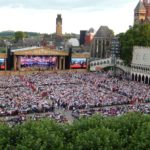
25 april 2016: Populaire cultuur in de regio

Louis Peter Grijp-lezing
May 8, 2016

Vacature onderzoeker Nederlands lied
May 9, 2016
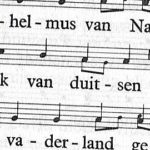
Nieuwsbrief mei 2016
May 10, 2016

Onderzoekers werpen met de computer nieuw licht op auteurschap Wilhelmus
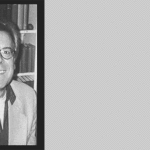
Rob Rentenaar 23/9/1938 – 9/5/2016
May 13, 2016

Vacature Directeur Meertens Instituut
May 18, 2016

Filmpje over promotieonderzoek naar Cité Duits
May 19, 2016
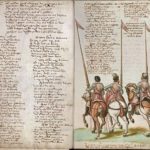
Eerste Louis Peter Grijp-lezing online
May 20, 2016
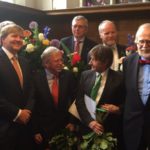
Marc van Oostendorp benoemd tot erelid Maatschappij der Nederlandse Letterkunde
May 24, 2016

Waarom kiezen we massaal voor alternatief genezen?
June 1, 2016
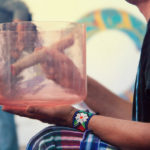
Nieuwsbrief juni 2016
June 3, 2016

Promotiebeurs voor Roger Weijenberg
June 16, 2016
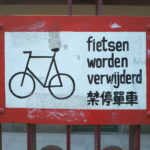
Wat is de staat van het Nederlands?
June 21, 2016
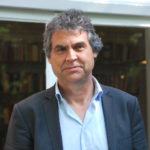
Sjef Barbiers benoemd tot hoogleraar Nederlandse Taalkunde in Leiden
July 7, 2016
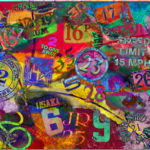
Veni voor onderzoek naar getallen
July 14, 2016
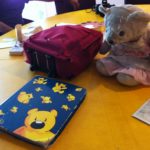
Dagboekarchief krijgt dagboeken van een beer
July 28, 2016
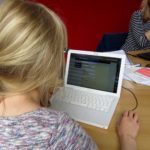
Stageplaatsen Standaardisering van dialecten in Nederland
August 23, 2016
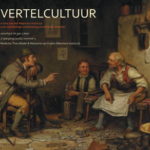
Nieuw nummer e-zine Vertelcultuur
August 31, 2016
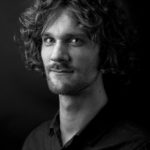
Folgert Karsdorp postdoc onderzoeker Nederlands lied
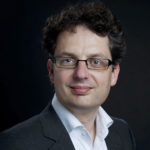
Antal van den Bosch directeur Meertens Instituut
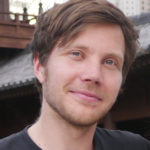
Nieuwe postdoc vererfgoedisering van religie en sacralisering van erfgoed
September 1, 2016
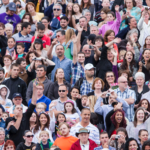
Het Meertens Crowdsourcingplatform
September 2, 2016

Nieuwsbrief september 2016
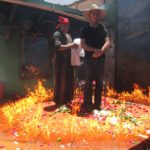
Alternatieve geneeswijzen onder de loep van de wetenschap
September 6, 2016

Het YouTube-kanaal van Marc van Oostendorp
September 9, 2016
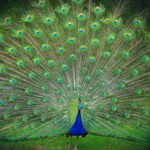
Oratietekst Theo Meder
September 14, 2016

KNAW-instituten vormen KNAW Humanities Cluster
September 22, 2016
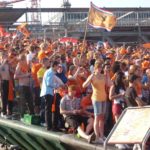
Symposium over nationalistische en religieuze sentimenten in Europa
September 30, 2016
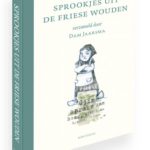
Herdruk en vertaling ‘Mearkes út ’e Wâlden sammele troch Dam Jaarsma’
October 5, 2016

Nieuw onderkomen voor Meertenscollecties en bibliotheek
October 7, 2016

HERILIGION: Religie wordt cultureel erfgoed; cultureel erfgoed wordt religie
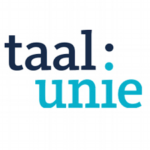
Nederlands belangrijkste voertaal in het Nederlandse en Vlaamse bedrijfsleven

Wij zoeken een communicatiemedewerker

Nieuwsbrief oktober 2016
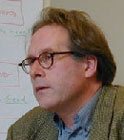
Religie, natie en emoties
November 4, 2016
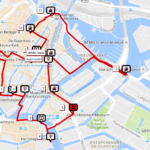
Nieuwe routes toegevoegd aan Sagenjager
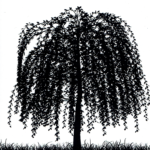
Symposium Levensverhalen

Nieuwsbrief november 2016
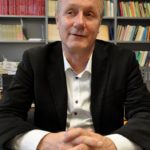
‘Ons onderzoek is urgenter dan ooit’
December 1, 2016

Metadata van dagboeken
December 2, 2016
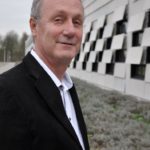
Nieuwsbrief december 2016
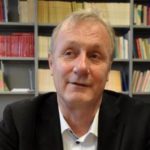
Hans Bennis nieuwe Algemeen Secretaris van de Nederlandse Taalunie
December 6, 2016
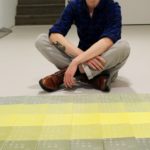
Folgert Karsdorp promoveert cum laude
December 13, 2016

Afscheidsrede Hans Bennis
December 30, 2016
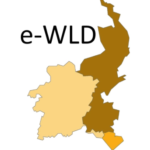
Elektronisch Woordenboek Limburgse Dialecten gelanceerd
January 6, 2017
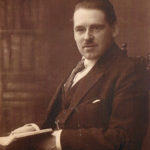
Online tool vertaalt namen vanuit het Russisch
January 9, 2017
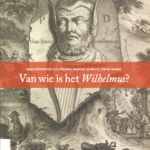
Computer als onderzoeksinstrument in de zoektocht naar de auteur van het Wilhelmus
January 10, 2017
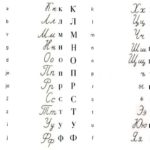
Online tool vertaalt namen vanuit het Russisch

Nieuwsbrief januari 2017
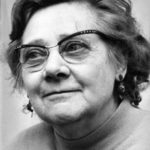
Jo Daan opgenomen in vrouwenlexicon
January 18, 2017

Nieuw nummer e-zine Vertelcultuur
January 26, 2017
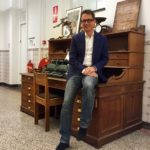
“We moeten naar buiten treden met een genuanceerd verhaal”
February 1, 2017
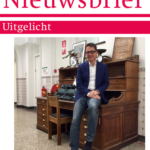
Nieuwsbrief februari 2017
February 3, 2017
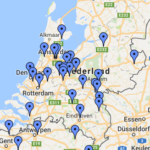
Volksverhalen in de volle breedte
March 7, 2017
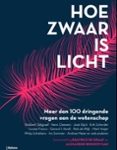
Nieuwe publicatie: Hoe zwaar is licht
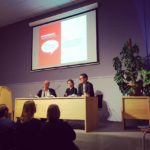
Livestream van discussie tussen Van den Bosch en Bennis
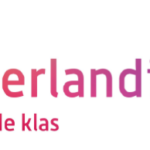
Neerlandistiek voor de klas
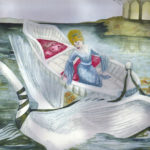
Nieuwsbrief maart 2017
March 8, 2017
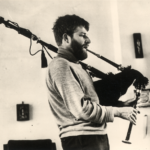
Louis Peter Grijp-lezing 2017
March 13, 2017
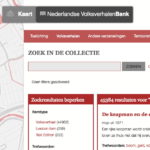
NWO-subsidie voor intelligente zoekmachine voor verhalenbanken
March 20, 2017
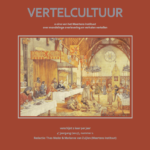
Wereldverteldag: nieuw nummer e-zine Vertelcultuur
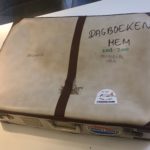
Nieuwe informatiefilm: wist u dit al over het Nederlands Dagboekarchief?
March 23, 2017

Online data als bron voor de taalonderzoeker
April 5, 2017
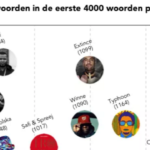
De grootste woordenschat in nederhop
April 6, 2017

Nieuwsbrief april 2017
April 12, 2017
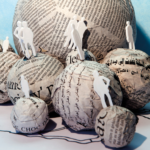
De positie van het Nederlands voor het eerst in kaart gebracht
May 4, 2017
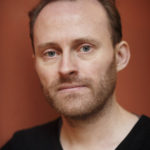
Wannes Van de Velde: bruggenbouwer tussen oude en nieuwe liedcultuur
May 8, 2017

Nieuwsbrief mei 2017
May 10, 2017
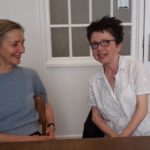
‘Dagboeken nemen je vooroordelen weg’
June 1, 2017
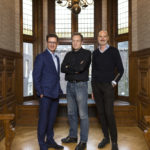
Directeuren KNAW Humanities Cluster over bundeling van krachten: ‘Hoe meer data, hoe meer kennis: onze grenzen vervagen’
June 9, 2017

Nieuwsbrief juni 2017
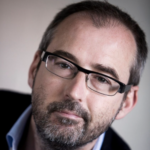
Mens en machine schrijven samen literair verhaal
June 16, 2017

Taalkundige Marc van Oostendorp benoemd tot hoogleraar Nederlands en Academische Communicatie
June 19, 2017
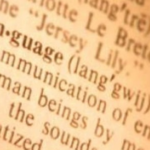
NWO-internationaliseringsproject met medewerking Meertens Instituut
August 1, 2017
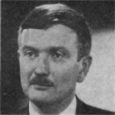
In memoriam dr. Jaap de Rooij, 25 oktober 1931 – 24 augustus 2017
August 28, 2017
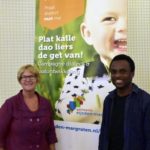
Dialect Web App voor het Eèsjdes (Eijsdens) en Mestreechs (Maastrichts)
September 4, 2017
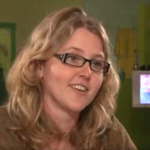
Twee nieuwe vrouwelijke hoogleraren verbonden aan Meertens Instituut
September 6, 2017
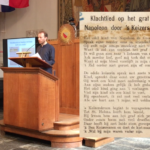
Louis Peter Grijp-lezing 2017 online terugkijken
September 7, 2017

Op zoek naar een nieuwe definitie van religie
September 8, 2017
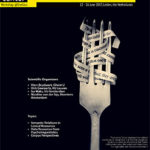
Nieuw consortium ‘Het mentale lexicon’
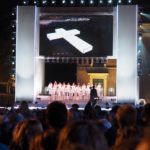
Nieuwsbrief september 2017
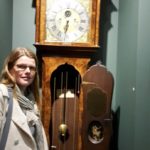
Het muziekrepertoire van achttiende-eeuwse bellenspeelkokken
October 9, 2017
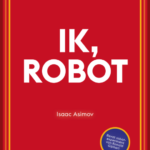
Verhaal van Giphart en literaire robot vanaf 1 november te lezen
October 10, 2017
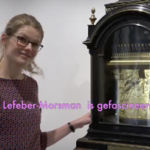
Nieuwsbrief oktober 2017
October 12, 2017
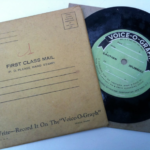
De verhuizing van de audiocollectie
October 30, 2017
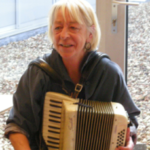
In memoriam Marie van Dijk (7-11-1943 – 27-9-2017)
October 31, 2017
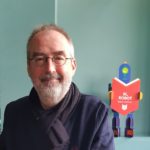
Iedereen mag met robot AsiBot schrijven
November 1, 2017
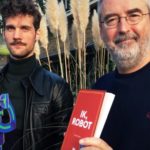
‘De robot van de machine is de mens’
November 2, 2017
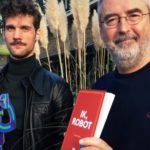
Nieuwsbrief november 2017
November 8, 2017
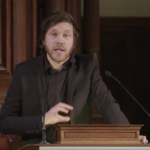
Onderzoek van start naar populisme in sociale media
November 20, 2017
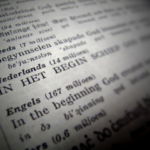
Zweedse subsidie voor onderzoek naar complexe werkwoordconstructies in het Germaans
December 4, 2017

Wat motiveert onze onderzoekers?
December 6, 2017
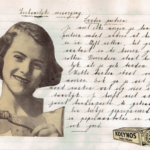
Een blik achter de schermen bij het Meertens Instituut
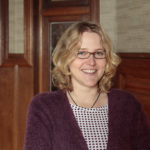
De Gouden Eeuw: de ‘eeuw van de expansie van het Nederlands’
December 8, 2017

Nieuwsbrief december 2017
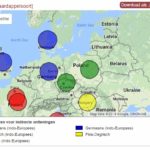
Duitse tegenhanger van Uitleenwoordenbank
January 9, 2018
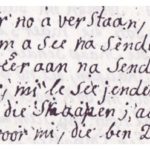
Gastonderzoeker Virgin Islands Dutch Creole
January 11, 2018

‘Er rust nog steeds een taboe op alternatieve geneeswijzen’
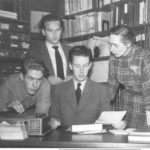
Drinken in dialect: opnames van de zinnen van de Reeks Nederlandse Dialectatlassen
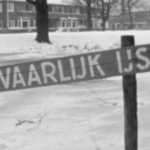
December 2017: Andere Tijden Special – Door weer en wind
January 12, 2018
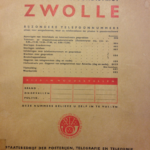
Januari 2018: Het telefoonboek, de gemeenschap in je hand

Nieuwsbrief januari 2018

Januari 2018: De populairste voornamen van 2017
February 8, 2018
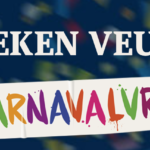
Januari 2018: Twee dagen vrij tijdens carnaval
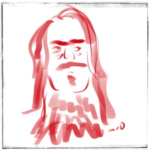
Januari 2018: De taal van Ilja Leonard Pfeijffer
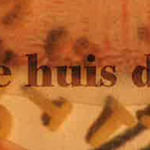
Januari 2018: Ouderen ergeren zich aan taalverloedering
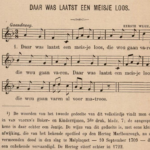
Terugkerende patronen in families van melodieën

Januari 2018: ‘Smartphone’ of ‘le mobile multifonction’?
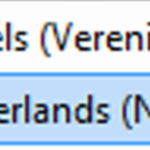
Januari 2018: Wat moet de taal van het hoger onderwijs zijn?
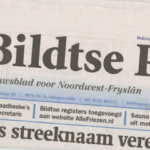
Januari 2018: Radiodocumentaire over het Bildts met archiefmateriaal van het Meertens Instituut
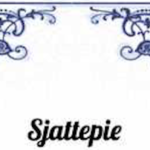
Mini-symposium ‘Gruuts op mien moojertaol’
February 9, 2018
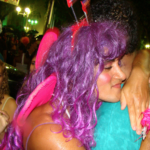
Februari 2018: Al dat gezoen en geflirt tijdens carnaval
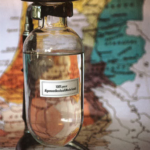
Standaardnederlands, Amsterdams dialect en het Wilhelmus: nieuwe onderzoeken van het Meertens Instituut
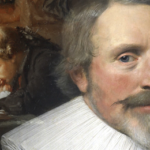
Februari 2018: De boeken- en krantenwereld in de zeventiende eeuw

Nieuwsbrief februari 2018
February 12, 2018
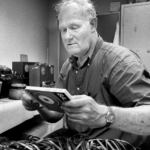
In memoriam Albert Cornelis Spaargaren (27 februari 1935 – 18 januari 2018)
February 21, 2018
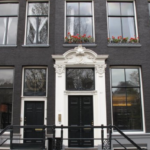
Februari 2018: Laatste deel ‘Das Büro’ verschenen in Duitsland
March 5, 2018

Februari 2018: De geschiedenis van het Olympisch Stadion in Amsterdam
March 7, 2018
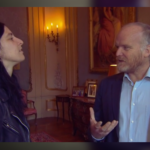
Februari 2018: Taal. De grootste verbinder van Nederland.
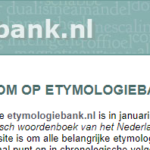
Etymologiebank bevat nu ook plaatsnamen
March 8, 2018
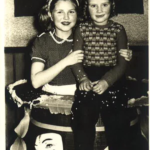
Februari 2018: Waarom Noord-Hollanders óók carnaval vieren
March 9, 2018

Februari 2018: Waar is de H gebleven in het Vlaamse “Oewist”?
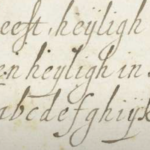
Februari 2018: Zo kwam de Statenvertaling tot stand
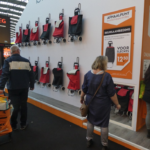
Februari 2018: De Huishoudbeurs. Antropologisch onderzoek op een steenworp afstand.
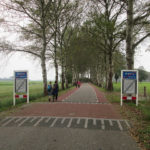
Nieuwsbrief maart 2018
March 12, 2018
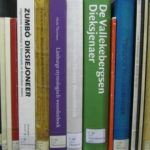
Maart 2018: Tweetalige Limburgse kinderen zijn beter in spelling
March 21, 2018

Maart 2018: Nederland houdt van gewoon – blog over de Huishoudbeurs, deel II
March 26, 2018
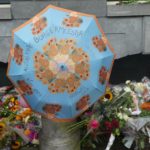
Maart 2018: Een verwrongen wiel als uiting van rouw
March 28, 2018
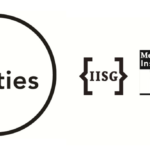
Vacature: Promovendus Populisme, Social Media en Religie
April 3, 2018
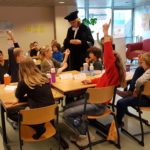
‘Heb je altijd een toga aan?’ Taalkundeprofessor Marjo van Koppen op de fiets naar de basisschool
April 8, 2018

Maart 2018: Wat betekent ‘op z’n elfendertigst’?
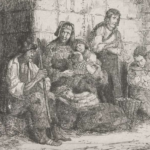
Maart 2018: Top 25 Romaniwoorden in het Nederlands
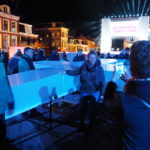
Maart 2018: ‘Niets is zo verandelijk als ritueel’
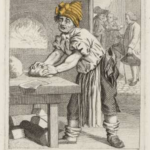
Maart 2018: Per toeval ontdekte Leidse opera wordt opgevoerd
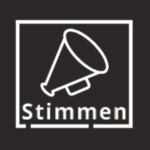
Stimmen fan Fryslân: app herkent waar je als spreker van het Fries vandaan komt
April 9, 2018
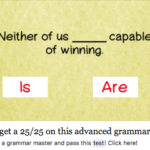
Maart 2018: Hoe ons taalgebruik op sociale media verraadt wie we zijn
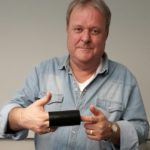
‘Ik ben en blijf een geluidsman’
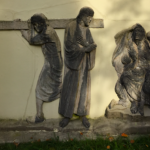
April 2018: Kortingsactie op zondag wordt religieuze rel
April 10, 2018
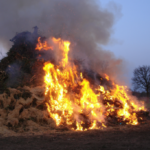
April 2018: Kom niet aan paasvuren
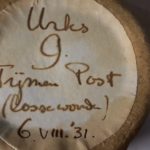
Nieuwsbrief april 2018
April 11, 2018
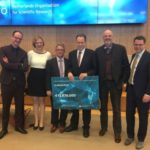
NWO kent 13,8 miljoen euro toe aan CLARIAH PLUS
April 13, 2018
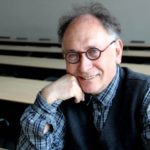
Lotharingen en de Europese minnelyriek
April 26, 2018

April 2018: 20 Oud-Hollandse woorden
April 30, 2018

April 2018: Hoe het woord ‘Mocro’ zijn onschuld verloor
May 2, 2018
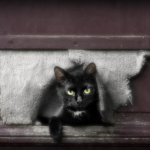
April 2018: Vrijdag de Dertiende: wie is er bijgelovig?
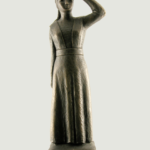
Beeldenbank uitgebreid met trefwoorden en verwijzingen

App ‘Sjtumme va Limburg’ binnenkort online
May 3, 2018
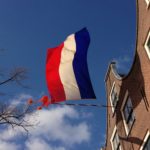
April 2018: De geschiedenis van het Wilhelmus
May 4, 2018
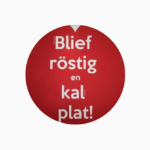
April 2018: Leven dialecten op door de sociale media?
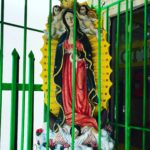
Mei 2018: Meimaand Mariamaand
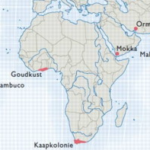
Vertrokken Nederlands: welke veranderingen maken de Nederlandse taal of dialecten en de Nederlandse cultuur in den vreemde door?
May 7, 2018
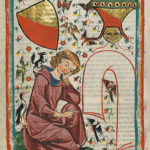
Nieuwsbrief mei 2018
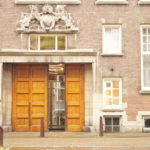
Marie Skłodowska-Curie Post-doc positions
May 8, 2018

Moppen van Anne Frank toegevoegd aan Volksverhalenbank
May 18, 2018

Meertens Instituut ontvangt condoleanceregister voor de broertjes Ruben en Julian

Nieuwe folkmuziek geïnspireerd door Onder de Groene Linde
May 30, 2018
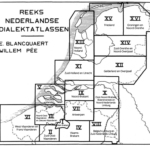
Reeks Nederlandse Dialectatlassen ook online raadpleegbaar
June 4, 2018
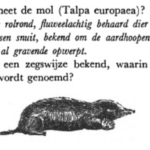
Help het Meertens Instituut met het digitaliseren van informatie over dialectgebruik en volksgebruiken
June 7, 2018

Grootschalig onderzoek naar de taal van Nederlandse emigranten
June 8, 2018
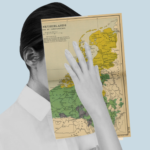
Mei 2018: Livestream van de discussieavond ‘Nederlandse letteren, vervagende grenzen’
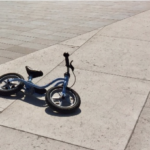
Mei 2018: Wat kun je leren van een condoleanceregister?
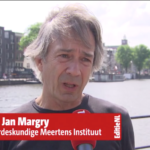
Mei 2018: Spijkenisse is de gemeente met het kleinste cultuuraanbod
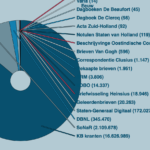
Juni 2018: Miljoenen teksten digitaal doorzoekbaar met Nederlab

Juni 2018: André Hazes-aansteker
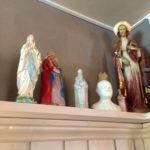
Juni 2018: Väöskes zijn op hun retour

Nieuwsbrief juni 2018
June 13, 2018
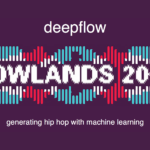
Meertens Instituut kraakt de code van hiphop op Lowlands
June 21, 2018
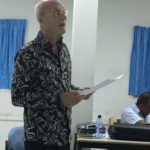
Wim Berends overleden
July 4, 2018
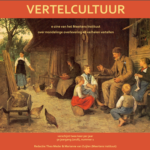
Nieuw nummer e-zine Vertelcultuur
July 10, 2018

Evaluatierapport Meertens Instituut gepubliceerd
July 18, 2018
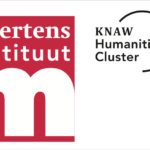
Vacature voor een senior-onderzoeker ‘body, food and well-being’ (m/v)
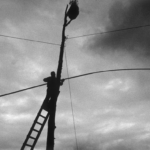
Nederlandse tradities door het oog van Rosa Verhoeve (1959-2018)
July 30, 2018
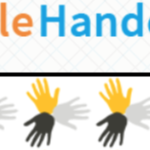
Meertens Instituut laat informatie over dialectgebruik en volksgebruiken digitaliseren door vrijwilligers
August 1, 2018

Oproep aan geëmigreerde Nederlanders en Vlamingen
August 2, 2018
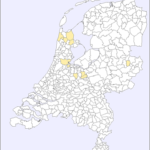
Juni 2018: Interview met Gerrit Bloothooft
August 21, 2018
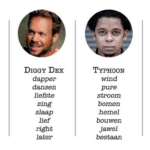
Juli 2018: Nederhop versus nederpop: welke woorden zijn typerend voor het Nederlandse lied?
August 22, 2018

Augustus 2018: Hoe serieus moet je het pastafarisme nemen?
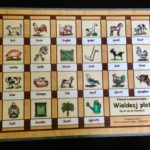
Augustus 2018: Het voordeel van tweetaligheid
August 27, 2018

Augustus 2018: Het lijdensverhaal van Maarten van der Weijden
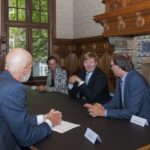
Koning bezoekt het Humanities Cluster en het NIAS van de KNAW
August 29, 2018
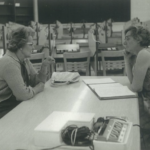
Onderzoek zonder Facebook
September 5, 2018
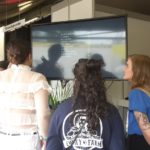
Rapbot weet Lowlandsgangers om de tuin te leiden
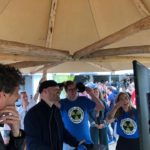
Augustus 2018: ‘Rapbot’ MC Turing heeft een indrukwekkende flow, voor een robot.
September 7, 2018
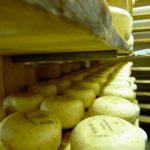
Augustus 2018: Gezocht: ‘zuivelicoon’ Frau Antje

Augustus 2018: Het Zweeds bevat veel woorden met Nederlandse wortels
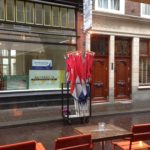
September 2018: Wetenschappers trekken aan de bel over studentenaantallen studie Nederlands
September 10, 2018

Nieuwsbrief september 2018
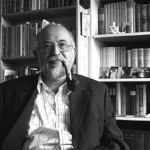
In memoriam Jurjen van der Kooi

Atlas van de Nederlandse taal ontvangt Jaarprijs Wetenschapscommunicatie
September 25, 2018

September 2018: Nederland een calvinistisch land? Dat is nou een nationale mythe.

September 2018: Plassen over een kwallenbeet en meer hardnekkige fabels
October 1, 2018
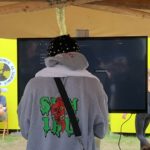
September 2018: ‘Taal is de sleutel tot echte artificiële intelligentie’
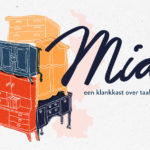
Klankkast Mia spreekt dialect in Limburgse verzorgingstehuizen
October 3, 2018
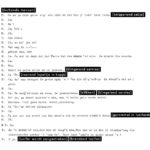
Geluidskunstenaar onderzoekt huisgeluiden in de Meertens-audiocollectie
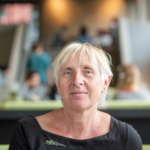
Twee onderzoekers spreken hun oratie uit

Oktober 2018: ‘Wat zeggie? Azzie val dan leggie!’ Het Rotterdams onder de loep
October 8, 2018
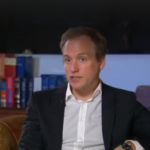
Oktober 2018: Zwarte Piet is zich door de jaren heen blijven veranderen
October 9, 2018

Oktober 2018: Politieke impuls voor Nedersaksisch
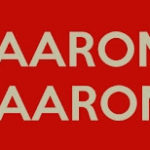
Oktober 2018: Welke dooddoeners gebruikt men in Nederland?
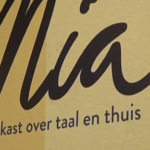
Oktober 2018: Dialect als medicijn in verzorgingstehuis

Oktober 2018: Waarom zijn Nederlanders zo grof op social media?
October 10, 2018
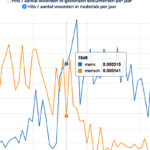
Nederlab brengt miljoenen teksten samen
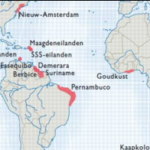
Vertrokken Nederlands: tweede enquête over de Nederlandse cultuur in den vreemde online
October 11, 2018

Nieuwsbrief oktober 2018
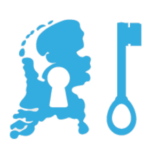
Nieuwe website met lesmateriaal over ons culturele erfgoed
October 24, 2018
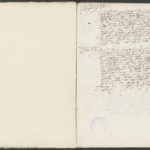
Automatische transcripties voor handgeschreven teksten

Quiz: Hoe goed is jouw Amsterdams?
November 2, 2018
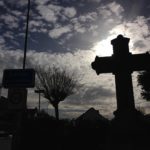
Oktober 2018: Wat is religie eigenlijk?
November 8, 2018
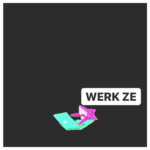
Oktober 2018: “Lees ze!” Ze?

Cultuur in een snelkookpan

Meertens Tune Collections uitgebreid met de melodieën van 18.000 liederen
November 9, 2018
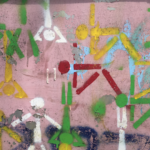
Vervolgonderzoek naar de Staat van het Nederlands
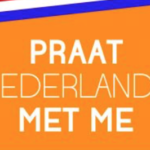
November 2018: Praat Nederlands met me

November 2018: Van deur naar deur met Sint Maarten
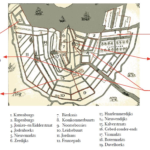
November 2018: Hoe klonk het Amsterdams in de 19e eeuw?
November 10, 2018
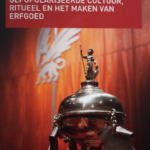
Nieuwsbrief november 2018
November 12, 2018

November 2018: Hazes is ook erfgoed
November 16, 2018

Meertensuitgaven gescand en doorzoekbaar gemaakt
November 19, 2018

Artist in residence Elise ‘t Hart – Hoe klinkt de tijd?

Geluidskunstenaar maakt serie podcasts over Meertens-audiocollectie
November 21, 2018
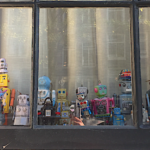
November 2018: ‘Menselijke’ robots zijn verder weg dan Sophia doet vermoeden
November 30, 2018

November 2018: Hoe klinkt de tijd?
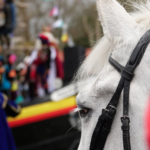
Vraag-en-antwoordpagina over Zwarte Piet
December 4, 2018

‘Huisgeluiden brengen je terug in de tijd’
December 7, 2018

December 2018: Wat is het geheim van een goed rijm?
December 9, 2018
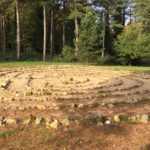
December 2018: Waarom ‘ja’ zeggen tegen het alternatieve?
December 10, 2018
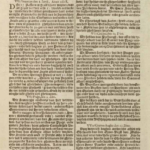
95 procent van crowdsourcingproject Historische Kranten afgerond

Nieuwsbrief december 2018
December 12, 2018

Laatste Vertelcultuur verschijnt als dubbeldik kerstnummer
December 13, 2018
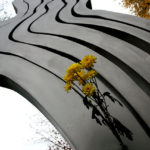
December 2018: Hoe een monument verdwijnt
December 19, 2018
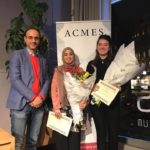
Scriptieprijs voor promovenda Populisme, social media en religie
January 6, 2019
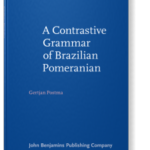
Eerste grammatica van het Pommers in Brazilië
January 11, 2019
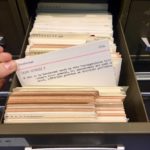
December 2018: Nieuwe decembertradities
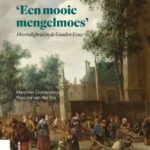
Hoe het Nederlands bloeide op een bed van andere talen
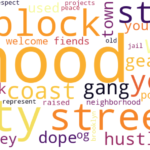
December 2018: Muziek componeren met artificiële intelligentie

December 2018: Huisgeluiden op de Zwitserse radio
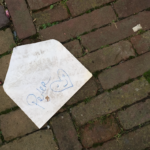
Januari 2019: What’s in a name? De tijdgeest!
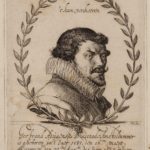
Nieuwsbrief januari 2019
January 15, 2019
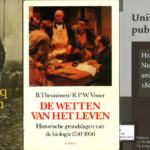
Nieuw in de bibliotheekcollectie: Wetenschapsgeschiedenis
February 4, 2019
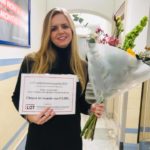
Taalkundigen Meertens Instituut winnen LOT Populariseringsprijs 2019
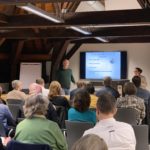
Bloggen over wetenschap
February 7, 2019

Januari 2019: Meertaligheid of mengelmoes?
February 10, 2019
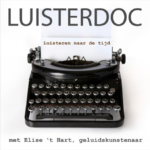
Januari 2019: Interview met geluidskunstenaar Elise ‘t Hart en collectiemanager Douwe Zeldenrust (podcast)
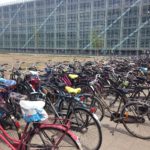
Januari 2019: Wat gebeurt er als straks niemand meer Nederlands wil studeren?
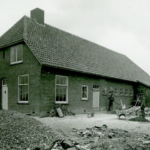
Januari 2019: Friese boerderijen kwamen relatief ongeschonden uit de oorlog
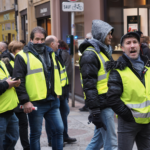
Januari 2019: Gele Hesjes-beweging in Nederland niet groot

Februari 2019: Zeg je áuto of óto?
February 11, 2019
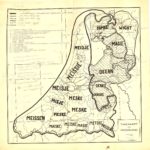
Februari 2019: Lopen dialecten gevaar om uit te sterven?
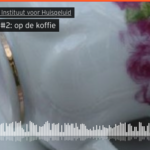
‘Op de koffie’: nieuwe podcast van Elise ‘t Hart
February 12, 2019

In memoriam: Prof. dr. Dirk Peter Blok, 7 januari 1925- 6 februari 2019
February 13, 2019
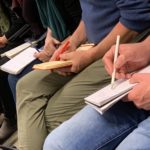
Nieuwsbrief februari 2019
February 15, 2019
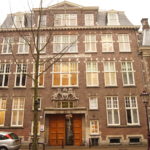
Marie Skłodowska-Curie Post-doc Positions: “Expression of Interest” for hosting fellows
February 21, 2019
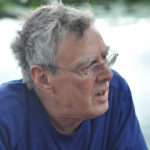
In memoriam: Dr. H.J.T.M. Brok (1943 – 2019)

Evaluatiecommissie: institutenstelsel KNAW en NWO heeft belangrijke meerwaarde
March 6, 2019

‘Zoals het klokje thuis tikt’: nieuwe podcast van Elise ‘t Hart
March 12, 2019
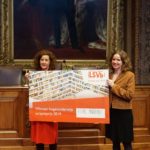
Toske Andreoli wint LSVb-scriptieprijs 2018
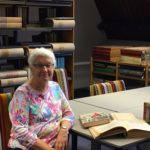
Meertens Instituut ontvangt unieke collectie Roodkapje-boeken
March 21, 2019
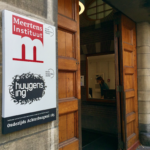
Meertens Instituut in adviescommissie over opleidingen Nederlandse taal en cultuur
March 22, 2019
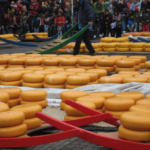
Maart 2019: Kaasjongens in Alkmaar
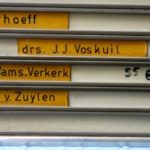
Maart 2019: Wij schreven op Het Bureau trouw aan Blok Drente zonder h
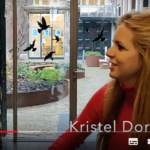
Maart 2019: Scholieren maken profielwerkstuk bij het Meertens Instituut

Maart 2019: Voed ik mijn kind in het Standaardnederlands op?
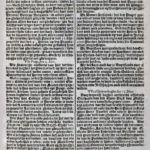
Maart 2019: Onderzoek naar de beginperiode van het Standaardnederlands
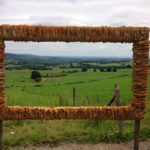
Maart 2019: Onderzoek naar provinciegevoel
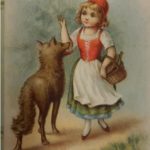
Nieuwsbrief maart 2019
March 25, 2019
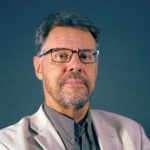
Onderzoeker Meertens Instituut Frans Hinskens benoemd tot bijzonder hoogleraar Taalvariatie aan de Radboud Universiteit
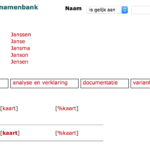
Maart 2019: Nieuwe feiten over naamswijzigingen
April 1, 2019

Maart 2019: ‘The Dutch Belt’ in Amerika bleef 200 jaar Nederlands praten
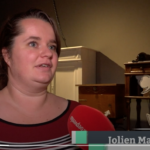
Maart 2019: ‘Plat proat’n’ meerwaarde in de zorg
April 2, 2019
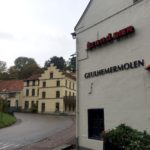
Maart 2019: Positie en de waarde van de dialecten worden onderschat
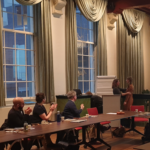
Scriptieprijs voor junior onderzoeker Welmoed Wagenaar
April 10, 2019
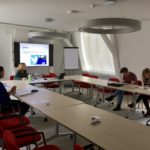
April 2019: Breng meer werkelijke kennis in het schoolvak Nederlands (opinie)
April 11, 2019
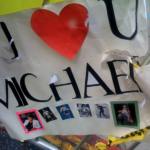
April 2019: Wat doen met standbeelden van artiesten die in ongenade geraakt zijn?
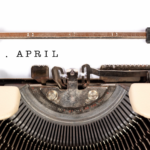
April 2019: De 1-aprilgrap
April 12, 2019
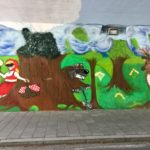
April 2019: Roodkapje had vroeger geen stoere jager nodig
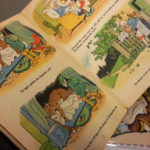
April 2019: Wat is de toekomst van Roodkapje?
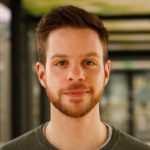
Klassieke muziek in de negentiende eeuw trekt volle zalen

Nieuwsbrief april 2019
April 16, 2019
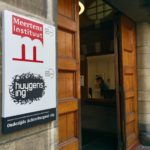
Vacature: onderzoekers voor NL-Lab
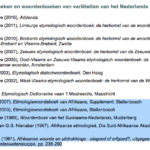
April 2019: Afrikaans in de etymologiebank
May 1, 2019
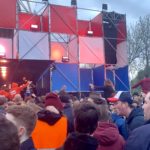
April 2019: Waarom heeft Nederland zo weinig feestdagen?
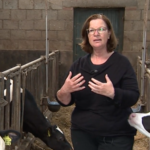
April 2019: Onderzoek naar communicatie tussen boer en koe
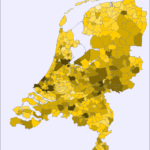
Mei 2019: Sterven achternamen uit?
May 20, 2019
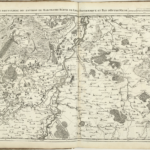
Twee onderzoekers Meertens Instituut in bestuur Levende Talen Limburgs
May 22, 2019

Vragenlijst over verschillende soorten geneeswijzen in Nederland

Mei 2019: Scam-mails uit Nigeria zijn moderne varianten van vertelcultuur
May 23, 2019
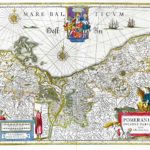
Pommers werpt nieuw licht op West-Germaanse taalfamilie
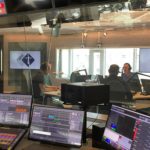
Mei 2019: Te snel sprekende radiopresentatoren, een probleem?
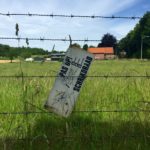
Mei 2019: Dertig en nog vrijgezel? Pas dan maar op in Zeeland
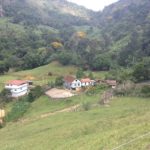
Nieuwsbrief mei 2019
May 26, 2019
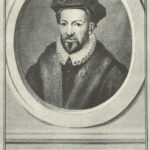
Wie wijst met zo groot mogelijke betrouwbaarheid de auteur van het Wilhelmus aan?
June 14, 2019
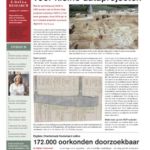
E-data & Research juni 2019 verschenen
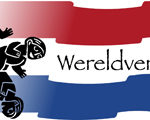
Artist in residence bij het Meertens Instituut: open voor aanvragen
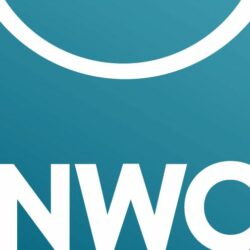
Twee jonge onderzoekers ontvangen NWO promotiebeurs
June 24, 2019
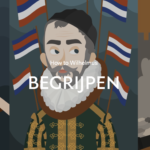
HowToWilhelmus: lespakket voor scholieren
June 27, 2019

Download nu ‘Een mooie mengelmoes. Meertaligheid in de Gouden Eeuw’
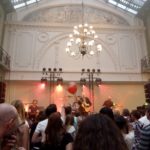
Mei 2019: Liedjes van Elvis en Bløf in plaats van psalmen
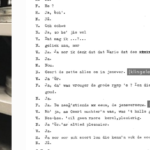
Juni 2019: Podcastclub met huisgeluiden

Juni 2019: Uitkomsten van project rondom hiphopgenerator
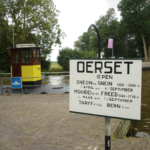
Juni 2019: Streektalen ontwikkelen zich nog door ze te appen
June 28, 2019
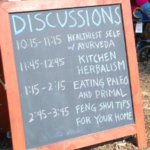
Juni 2019: Meerderheid Nederlanders wil alternatieve zorg in basispakket
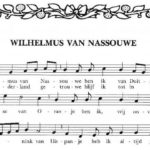
De geschiedenis van het Wilhelmus is nooit af
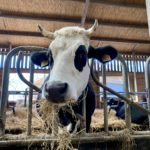
Juni 2019: Taalwetenschapper onderzoekt communicatie met dieren
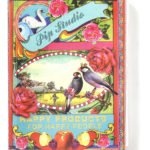
Juni 2019: Hoe het Nederlands Dagboekarchief uitgroeide tot een verzameling vol levensverhalen
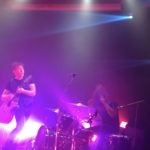
Juni 2019: De jeugd maakt trots muziek in eigen taal
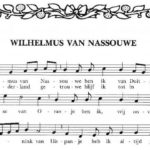
Nieuwsbrief juni 2019
July 1, 2019
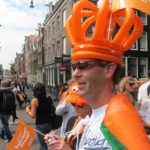
SCP-rapport verschenen over nationale identiteit binnen Nederland
July 4, 2019

Juli 2019: Kinderverjaardagen, een nieuw businessmodel, of een nieuw ritueel?
July 10, 2019
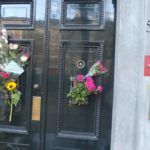
Juli 2019: Bermmonumenten ook voor incidenten buiten het verkeer
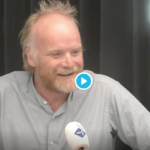
Juli 2019: Esperanto in nood

NWO-subsidie voor onderzoek naar taalgebruik in 17e-eeuwse kranten
July 23, 2019
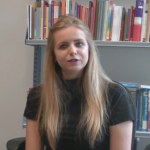
Juli 2019: Un(nen) oma: mannelijke, vrouwelijke en onzijdige woorden in het Brabants
July 30, 2019
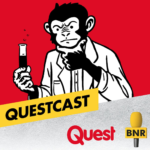
Augustus 2019: Kunnen we de Nederlandse taal makkelijker maken?
August 8, 2019
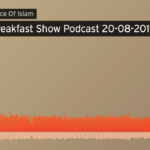
Augustus 2019: Onderzoeker Meertens Instituut duidt tweet van Wilders op Britse radio
August 10, 2019
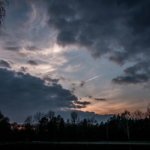
Augustus 2019: Inspirobot, de quotes spuwende inspiratiebron

Vacature teamleider communicatie ad interim
August 12, 2019
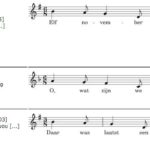
Artificiële Intelligentie achter de Liederenbank
September 6, 2019

Vacature voor een promovendus (m/v) in het project ‘Spread the new(s)’
September 9, 2019
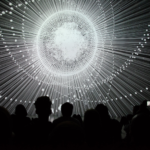
September 2019: De computer krijgt (nog) geen tien voor taal
September 10, 2019

Nieuwjaarsboekje Meertens Instituut genomineerd voor prijs beste taalboek
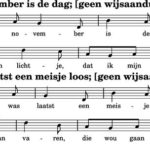
Nieuwsbrief september 2019
September 11, 2019

Resultaten van het eerste vervolgonderzoek naar de Staat van het Nederlands
September 17, 2019

Op zoek naar muzikaal erfgoed
October 7, 2019

Hoe staat het Nederlands er nu voor?
October 9, 2019
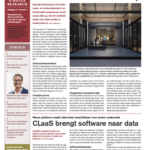
E-data & Research oktober 2019 verschenen
October 14, 2019
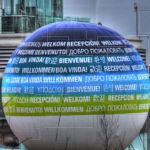
September 2019: Het gaat goed met de Nederlandse taal
October 17, 2019
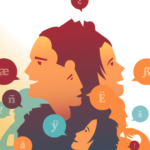
September 2019: Het Nederlands voert nog altijd de boventoon – behalve in de wetenschap

September 2019: Sinterklaasjournaal zonder Zwarte Piet
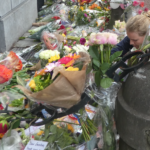
September 2019: Herdenking monstertruckdrama

September 2019: Genderneutraal speelgoed?
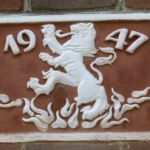
Oktober 2019: Wie is de eigenaar van het platteland?

Oktober 2019: Platteland versus stad: is er sprake van wantrouwen?
October 21, 2019

Nieuwsbrief oktober 2019
October 23, 2019
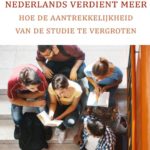
KNAW brengt advies uit over een sterkere positie van de Neerlandistiek
October 31, 2019
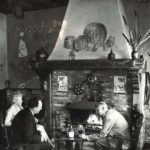
Geliefd bij het volk, buitenbeentje in de wetenschap
November 7, 2019

Oktober 2019: Bang zijn voor de wolf: het ‘Roodkapje-syndroom’
November 11, 2019
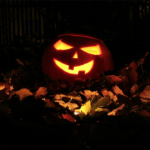
Oktober 2019: Halloweenhoofdstad Zoetermeer

Oktober 2019: Luisteren naar de stem van een Brabants meisje van 100 jaar geleden

Nieuwsbrief november 2019
November 12, 2019
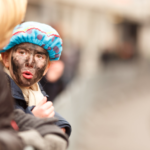
November 2019: Stuttgarter Zeitung over Zwarte Piet
November 14, 2019

Geëmigreerde Nederlanders en Vlamingen houden vast aan eigen taal en cultuur
November 15, 2019
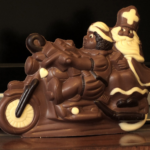
November 2019: De Zwarte-Pietendiscussie gaat niet alleen om kleur
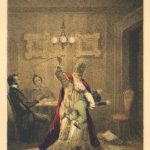
November 2019: Premier Rutte noemt Zwarte Piet-website van het Meertens Instituut in Tweede Kamer
November 26, 2019
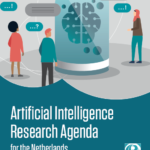
Nationale onderzoeksagenda artificiële intelligentie
November 27, 2019

November 2019: Statenvertaling diende niet als basis voor Nederlandse eenheidstaal
December 3, 2019
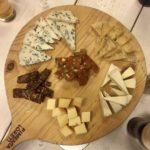
November 2019: Geëmigreerde Nederlanders hechten nog sterk aan de Nederlandse taal en lekkernijen

November 2019: Bepalen techbedrijven door emoji’s onze taal?
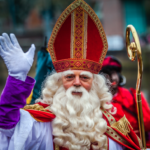
November 2019: Immer Ärger mit dem Schwarzen Peter

November 2019: Convenant voor de bescherming van de Limburgse taalcultuur
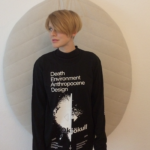
Artist in Residence onderzoekt hoe we klimaatverandering bespreekbaar kunnen maken
December 4, 2019
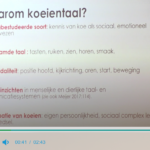
November 2019: Wat bedoelt een koe die loeit?
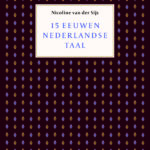
November 2019: Het Nederlands dat we nu spreken, hebben we te danken aan migranten

Ode aan de koe

December 2019: ’In volksfeesten schuilt altijd gevaar’
December 5, 2019
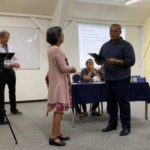
Presentatie van de Staat van het Nederlands in Suriname
December 12, 2019
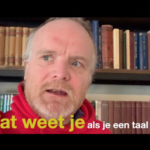
December 2019: Wat weet de wetenschap over taal?
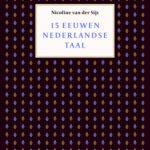
December 2019: Geen tsunami aan Engelse leenwoorden
December 13, 2019

Nieuwsbrief december 2019
December 18, 2019
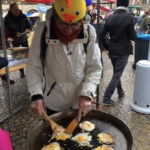
December 2019: Boerenprotest of braderie?
January 8, 2020
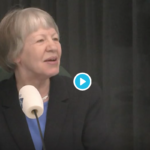
Januari 2020: Welke ‘foute’ spreektaal wordt officieel Nederlands?
January 20, 2020
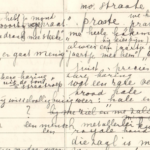
Cultureel erfgoed beschikbaar maken voor je nageslacht via de Vragenlijstenbank
January 22, 2020
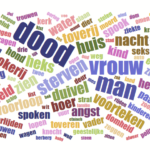
Verhalen vertellen wordt bijgeschreven op Inventaris Immaterieel Erfgoed Nederland
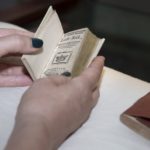
DJ Ruud de Wild maakt tentoonstelling in Huis van het boek in samenwerking met Meertens Instituut e.a.
January 23, 2020
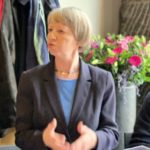
Januari 2020: ‘De taalfout van nu is de taal van de toekomst’
January 26, 2020

Januari 2020: Het verdwijnen van de Amsterdamse dialecten
January 28, 2020

Januari 2020: Mellek is goed voor ellek
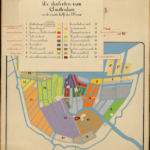
Januari 2020: In de Kalverstraat sprak men het fraaist

Januari 2020: Waar komt de traditie van vuurwerk vandaan?

Nieuwe website voor scholieren: Taal onderzoek je zó
February 4, 2020
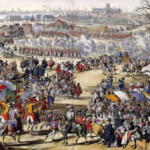
Nieuwsbrief januari 2020

Nieuwe Vragenlijstenbank geeft inzicht in ontwikkeling taal en cultuur
February 12, 2020

Vacature directeur bedrijfsvoering – KNAW Humanities Cluster
February 13, 2020
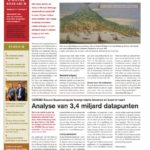
E-data & Research februari 2020 verschenen
February 14, 2020

NWO-subsidie voor onderzoek naar digitale samenleving
February 17, 2020

Help onze stagiaires bij het doen van onderzoek
February 20, 2020
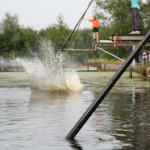
Workshop ‘Immaterieel erfgoed & musea’ ontwikkeld door Kenniscentrum Immaterieel Erfgoed Nederland en Meertens Instituut
February 21, 2020

Februari 2020: Lang leve de snackcultuur!

Februari 2020: Waarom komen de achternamen Jansen en De Vries zo vaak voor in Nederland?
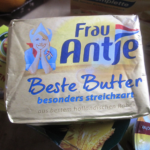
Februari 2020: Kijktip: Frau Antje, een Hollandse hit in Duitsland
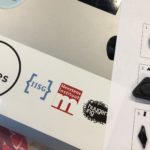
De smaak van Nederland

Februari 2020: Schrappen naam ‘carnaval’ op basisschool
February 24, 2020
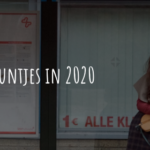
Februari 2020: 50 deuntjes in 2020, video’s met oude volksmuziek

Februari 2020: Internationale Dag van de Moedertaal: kleinere talen in leven houden
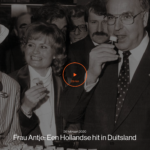
Februari 2020: Deutschland liebt Frau Antje
February 27, 2020
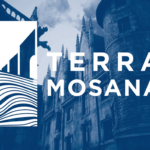
Oproep voor de Euregio: help mee om gedeelde geschiedenis zichtbaar te maken via taal
February 28, 2020
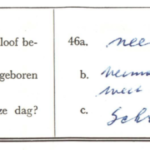
Februari 2020: Schrikkeldag: buitengewoon gewoon
February 29, 2020

Nieuwsbrief februari 2020
March 3, 2020
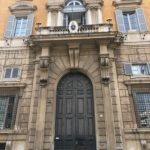
Maart 2020: ‘Piusarchieven’ vanwege corona alweer gesloten
March 13, 2020
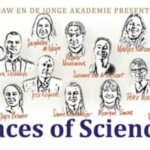
Religiewetenschapper Sakina Loukili één van de twaalf nieuwe Faces of Science

Louis Peter Grijp-lezing 2020 uitgesteld
March 19, 2020
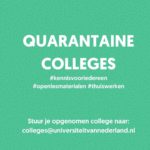
Quarantaine Colleges over taal en meer
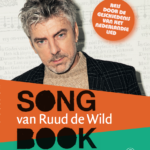
Prijsvraag #mijnlied: win ‘Songbook van Ruud de Wild. Reis door de geschiedenis van het Nederlandse lied’!
March 23, 2020

Volksverhalenbank aangevuld met verhalen waarin corona een rol speelt
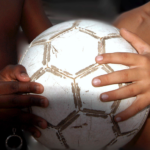
Maart 2020: Opmerkelijk taaladvies in Vlaanderen
March 24, 2020

Maart 2020: De verspreiding van nepnieuws in tijden van corona
March 25, 2020
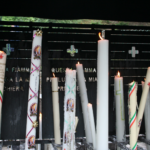
Maart 2020: ‘Deze epidemie leert ons dat je niet alles in de hand hebt’

Maart 2020: Hoe klinkt de Euregio Maas-Rijn?
March 27, 2020
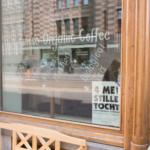
Help onze stagiaire bij haar onderzoek naar stille tochten!

Maart 2020: ‘Een patatje is eigenlijk een klein feestje’
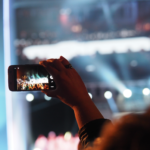
Waarom de passie zo populair is in Nederland
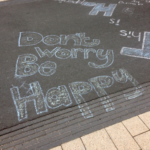
Maart 2020: Zit het woordje ‘het’ in de verdrukking?
March 29, 2020
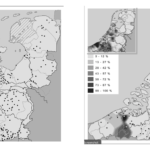
Website Middelnederlands.nl geopend
April 1, 2020

Maart 2020: Corona nu al onlosmakelijk verbonden met rituelen
April 2, 2020
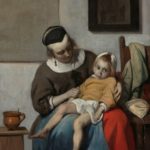
Maart 2020: Een korte geschiedenis van epidemische luchtwegaandoeningen (deel 1)
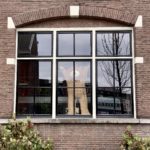
Meertens-tips voor thuis
April 3, 2020
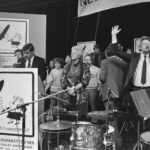
Subsidie van het Fonds Staatsman Thorbecke voor onderzoek naar geschiedenis van petities
April 21, 2020

Meertens Instituut gesloten tot en met 20 mei
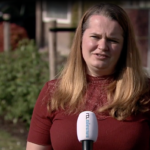
April 2020: Isolement van ouderen verzachten met verhalen in dialect
April 23, 2020
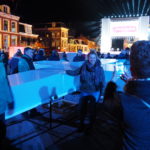
April 2020: Matthäus-Passion vergelijken met The Passion: heiligschennis?
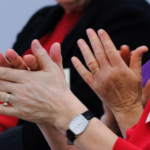
April 2020: Waarom maken mensen zich er druk over of er wel of niet geapplaudisseerd mag worden bij de Matthäus-Passion?
April 24, 2020
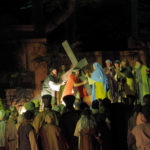
April 2020: Een opmerkelijke comeback voor passiespelen
April 28, 2020
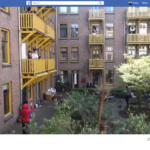
April 2020: Pasen in tijden van corona
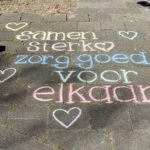
April 2020: Woningsdag: nieuwe rituelen in tijden van corona

April 2020: Corona en het complotdenken
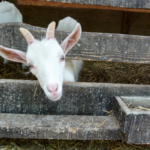
April 2020: Waarom komt het getal 7 zo vaak voor in sprookjes?
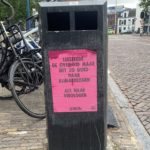
Volksverhalenbank opnieuw uitgebreid met verhalen rondom corona
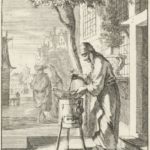
April 2020: Een korte geschiedenis van epidemische luchtwegaandoeningen (deel 2)
April 29, 2020
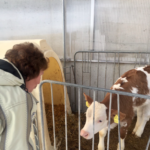
April 2020: Groetende koeien? Dat is heel goed mogelijk.
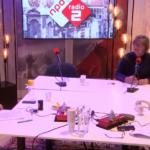
April 2020: Een woordenboek van ‘boehs’
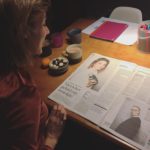
April 2020: De geluiden van de lockdown
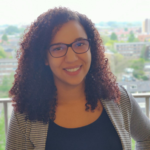
Help onze stagiaire Xamorah bij haar onderzoek over het gebruik van het Nederlands en Sranan Tongo
April 30, 2020
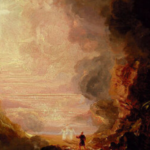
April 2020: Coronacrisis: de eindtijd nabij?
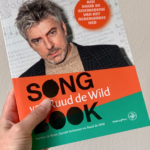
April 2020: Songbook: een interessante geschiedenis van de Nederlandse liedcultuur
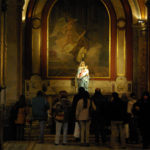
Meimaand Mariamaand: nieuwe oude Mariaheiligdommen in Nederland

Ruud de Wild en zijn fascinatie voor het Nederlandse lied

Nieuwsbrief april 2020

Onderzoekers meten de gevoeligheid voor corona-nepnieuws
May 18, 2020
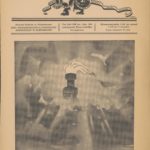
Crowdsourcing maakt zeventiende-eeuwse kranten op Delpher beter doorzoekbaar

E-data & Research juni 2020 verschenen
May 26, 2020
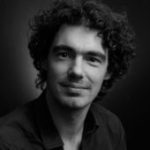
Helmer Helmers benoemd tot lid van de Raad voor Geesteswetenschappen
May 29, 2020
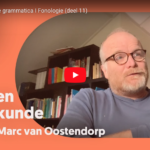
Mei 2020: Collegereeks fonologie van 11 delen
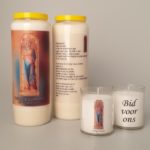
‘Coronaverhalen zijn de barometer van onze samenleving’
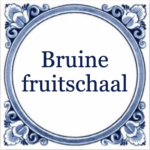
Mei 2020: Weet u wat een bruine fruitschaal is?
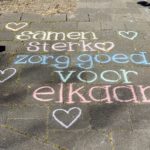
Antal van den Bosch in speciale onderzoeksgroep RIVM
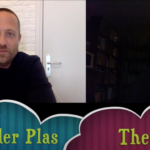
Mei 2020: ‘Corona-complottheorieën geven een gevoel van controle’
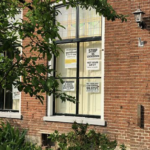
Mei 2020: ‘We moeten nadenken over nationale rituelen om dit trauma te verwerken’

Mei 2020: Oude kranten overtikken met een alfabet van gotische letters
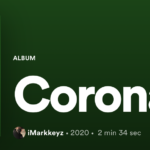
Mei 2020: Epidemische muziek is van alle tijden
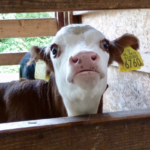
Mei 2020: Koeien loeien niet zomaar
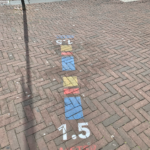
Mei 2020: Waar blijven de loeiharde grappen over corona?

Mei 2020: Waarom geloven mensen in het 5G-complot?
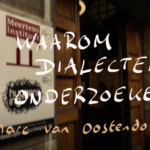
Mei 2020: Waarom dialecten onderzoeken?

Nieuwsbrief mei 2020
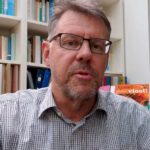
Advies over talige diversiteit in het onderwijs
June 5, 2020

In Memoriam Jacobus Gerardus Kruisheer
June 14, 2020
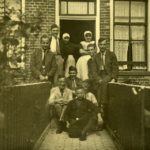
Collectioneren zonder computers, sociale media en databanken: hoe ging dat 90 jaar geleden?
June 25, 2020

KNAW Humanities Cluster bouwt Diamond Open Access platform voor wetenschappelijke tijdschriften

Top 5 vreemdste corona-nepnieuwsverhalen
June 26, 2020
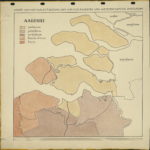
Oproep: help mee met het toegankelijk maken van historische taal- en cultuurvragen!
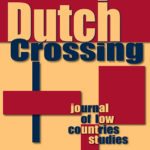
Dutch Crossing – Journal of Low Countries Studies
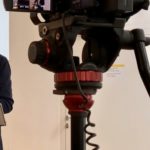
Juni 2020: Inloggen in het huis van God?
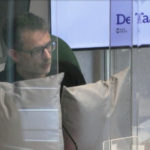
Juni 2020: Hoe beïnvloeden taal en communicatie ons corona-gedrag?

Juni 2020: Top 40 van de Gouden Eeuw

Juni 2020: Zegt u stommerd, stommeling of stommerik? Help mee met het in kaart brengen van verschillen in afleidingen

Juni 2020: Taal ontdoen van racisme

Juni 2020: “Ons huidige begrip van taal is wellicht te begrensd”
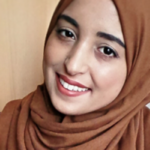
Juni 2020: Wie is de ‘echte’ Nederlander?

Juni 2020: Trots op je streek door de regionale vlag
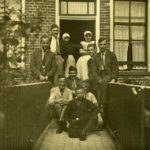
Nieuwsbrief juni 2020
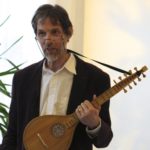
Louis Peter Grijp Fonds ter stimulering van het Nederlandse lied
July 2, 2020
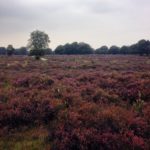
Juli 2020: Dialectcolumns in Trouw
August 28, 2020
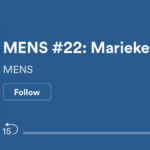
Juli 2020: Wat doet het Digital Humanities Lab?
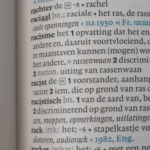
Juli 2020: Zit racisme ingebakken in alledaagse taal?
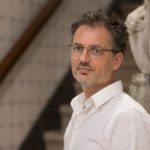
Antal van den Bosch benoemd tot bijzonder hoogleraar Taal en Kunstmatige Intelligentie
September 8, 2020
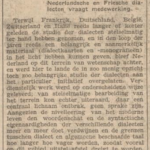
Meertens Instituut bestaat 90 jaar!

NIDI en Meertens Instituut gaan vruchtbaarheidsintenties in Europa meten
September 22, 2020
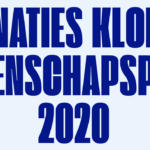
Onderzoek naar dierentaal genomineerd voor Klokhuis Wetenschapsprijs 2020
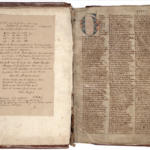
Augustus 2020: Op jacht naar de verloren ridderroman
September 27, 2020
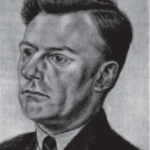
De beginjaren van het Meertens Instituut
September 28, 2020

Augustus 2020: Sagen najagen in de Sagenjager
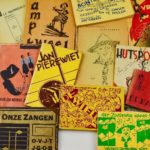
Liedboektentoonstelling op Schiphol
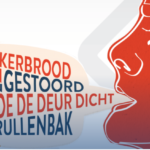
Brabantse accenten gezocht voor klankkast Miet
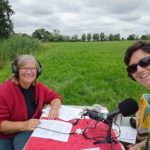
September 2020: Podcast over meertalig opgroeien met dialect; Limburgs
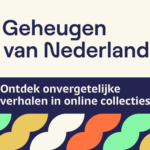
Meertens Instituut maakt digitaal erfgoed zichtbaar in het Geheugen van Nederland

Nieuwsbrief september 2020
September 30, 2020

Nieuwe enquêtes Staat van het Nederlands online
October 13, 2020
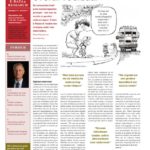
E-data & Research oktober 2020 verschenen
October 15, 2020
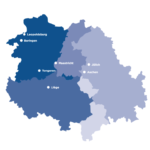
Geluidskunstwirk presenteert ’t gezamelikke culturele erfgood va de Euregio (persbericht in Nederlands en Limburgs dialect)
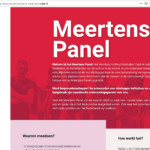
Doet u mee aan het Meertens Panel?
October 30, 2020
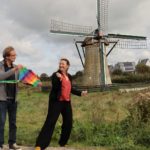
De vlieger als terugkerend beeld in de Nederlandse cultuur
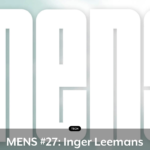
Oktober 2020: In geuren en kleuren praten over Nederland

Oktober 2020: Coronacrisis snelkookpan van broodjeaapverhalen
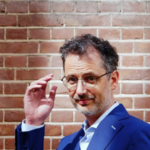
Oktober 2020: ‘Vertaalprogramma werkt zoals je brein’ – interview met taaltechnoloog Antal van den Bosch
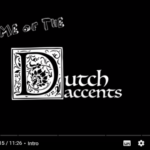
Oktober 2020: Video over 267 Nederlandse accenten

Oktober 2020: Heilige en geneeskrachtige koortsboom drukbezocht tijdens coronacrisis

Oktober 2020: Wordt Kerst dit jaar gezelliger?
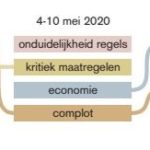
Oktober 2020: Twitterdata input voor RIVM
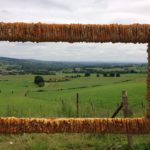
Oktober 2020: Limburgs is niet vanzelfsprekend
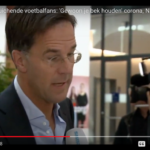
Oktober 2020: Verruwt de taal?

Nieuwsbrief oktober 2020

Artificiële Intelligentie wordt beter door cultureel erfgoed
November 16, 2020
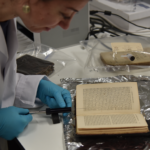
Op zoek naar verloren geuren: nieuw onderzoeksproject ontdekt Europees geurerfgoed
November 17, 2020

De Nederlandse Dataprijs gaat naar 17e-eeuwse krantenset
November 30, 2020
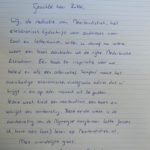
Initiatief van neerlandici: Mark Rutte krijgt vanaf nu wekelijks een boek
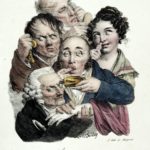
November 2020: Hoe rook Europa een paar eeuwen geleden eigenlijk?

November 2020: Klankkast met dialecten reist langs Brabantse zorgcentra en vrolijkt ouderen op
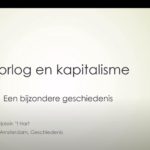
November 2020: Lockdown Lecture over oorlog en kapitalisme (NL Lab)
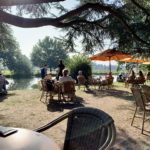
November 2020: Smokkelen met coronaregels, typisch Nederlands?
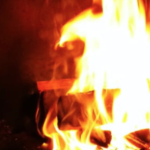
November 2020: Corona een voorbode van de eindtijd? (NL Lab)

November 2020: Vuurwerk om boze geesten te verjagen
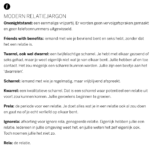
November 2020: Van kwarrel tot rela; modern relatiejargon
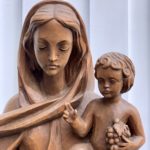
November 2020: Gezocht: Utrechtse Maria’s die willen poseren voor een bijzondere expositie
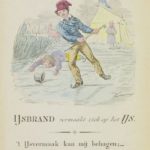
‘Elke letter heeft een eigen karakter’
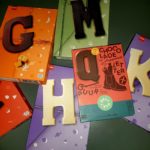
Nieuwsbrief november 2020

Kunstmatige intelligentie moet cultureel bewust worden
December 18, 2020
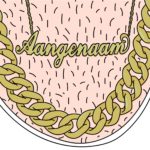
November 2020: Zeg me je naam en ik weet waar je vandaan komt
December 21, 2020

Gezocht: burgerwetenschappers die vragen over taal en alledaagse leefcultuur willen beantwoorden
December 22, 2020
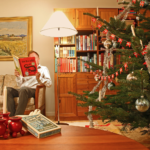
Meertens-tips voor thuis aangevuld voor de ‘kerstlockdown’
![December 2020: Hoe anders ging Europa ruiken toen [vul gebeurtenis in]?](https://meertens.knaw.nl/wp-content/uploads/2020/12/ODEUROPA3-150x150.jpg)
December 2020: Hoe anders ging Europa ruiken toen [vul gebeurtenis in]?

December 2020: Trotser op je provincie dan op Nederland
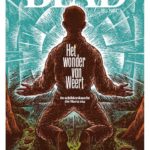
December 2020: Niemand geloofde dat Thieu Maria zag
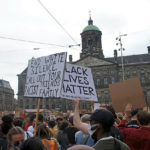
December 2020: Waarom Malcolm X nog steeds belangrijk is voor Nederlandse moslims
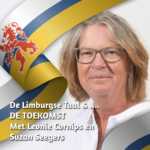
December 2020: Podcast over de Limburgse taal

December 2020: Door corona vertimmeren we onze rituelen

December 2020: Een ‘blokjeskerst’ dan maar?
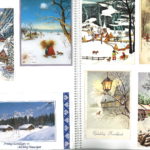
December 2020: De papieren kerstkaart is terug van (bijna) weggeweest

December 2020: Wat zijn we zonder feesten? ‘De mens is een sociaal wezen’
December 30, 2020

Nieuwsbrief december 2020
January 5, 2021
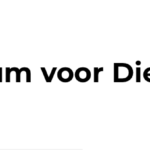
Centrum voor DierMens Studies wil dieren serieus nemen
January 7, 2021
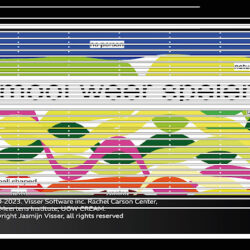
Artist in residence Jasmijn Visser – Mooi weer spelen
January 19, 2021

De soundtrack van onze geschiedenis: onderzoeksproject Polifonia duikt in het muzikale erfgoed van Europa
January 21, 2021
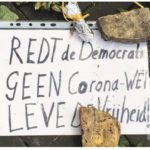
Januari 2021: Meertens Instituut onderzoekt lockdowncultuur
January 26, 2021


